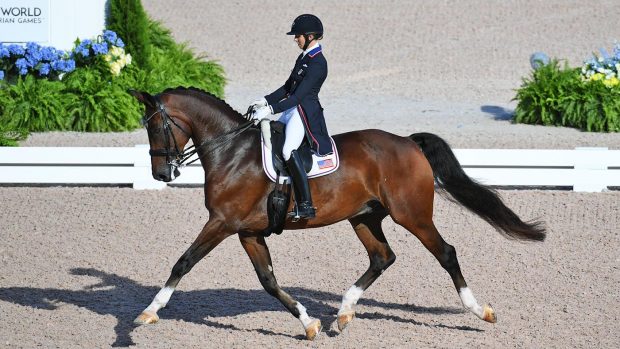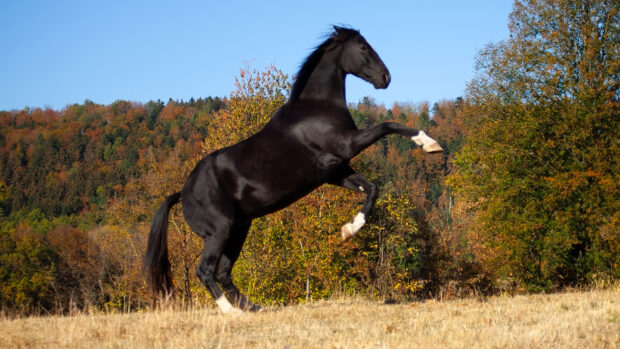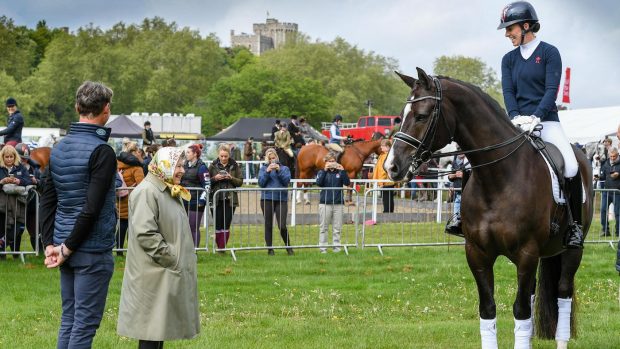Grassroots eventers who are heading to Badminton for the Voltaire Design Grassroots Championships (3-4 May) will need to be on top form and to have done their homework ready for the challenging Badminton grassroots cross-country course that awaits them.
Course-designer James Willis has produced two courses that incorporate many of the iconic features of the Badminton parkland, giving the 60-odd BE100 riders and over 110 BE90 competitors the chance to follow in the heroes’ footsteps.
Former five-star eventer Paul Tapner has walked the 2023 Badminton grassroots cross-country course and says: “I love that so many historic and current elements of the five-star course have been incorporated into the grassroots courses – the wall, the Keepers’ Brush ditch, the corral and the Lake.”
As with the five-star course, the grassroots course changes direction each year enabling the designer to keep the questions fresh. Mr Willis says the championships courses include more jumping efforts over a longer distance than riders would expect at a normal British Eventing competition at the level, so fitness of horse and rider will be key.
While the fences remain within the standard BE height dimensions for each level, the technicality of the questions being asked is harder. “So the BE100 riders should expect some fences with novice technicality over BE100 size fences,” he says.

Course-designer James Willis at the Lake standing beside a thick piece of timber that has been hollowed out, bolted back together and secured by MIM Clips.
The course running clockwise around the park gives competitors a longer walk down to the cross-country start area, with the chance for horses and riders to soak up the atmosphere. As Paul pointed out, whether or not that will help to settle their nerves will depend on the individual.
The more challenging terrain comes towards the first half of the course, which will suit some combinations better than others. Mr Willis explains: “The terrain plays a bigger role in the early part of the course, the technicality comes through the middle section and then we ease off. Riders will need to be switched on and get into it quite quickly.”
So what will the riders be facing? Scroll down to view all the fences in their undressed state. As usual, the BE90 fences have orange numbers, while the numbers for the BE100 course are pink.
The Badminton grassroots cross-country course
Fence 1 – BE Log Pile: both courses have a nice inviting fence to get started.

The start flags will be re-sited to mark the start before the competition gets underway.

Fence 2 – Tuckwell’s Table: a decent sized table set off a slight bend, positioned on very slightly rising ground to put the horses’ hocks under them and help riders make a good job of it. It is quite an eyeful and will certainly get the BE100 horses up in the air, to help prepare them for the job ahead.
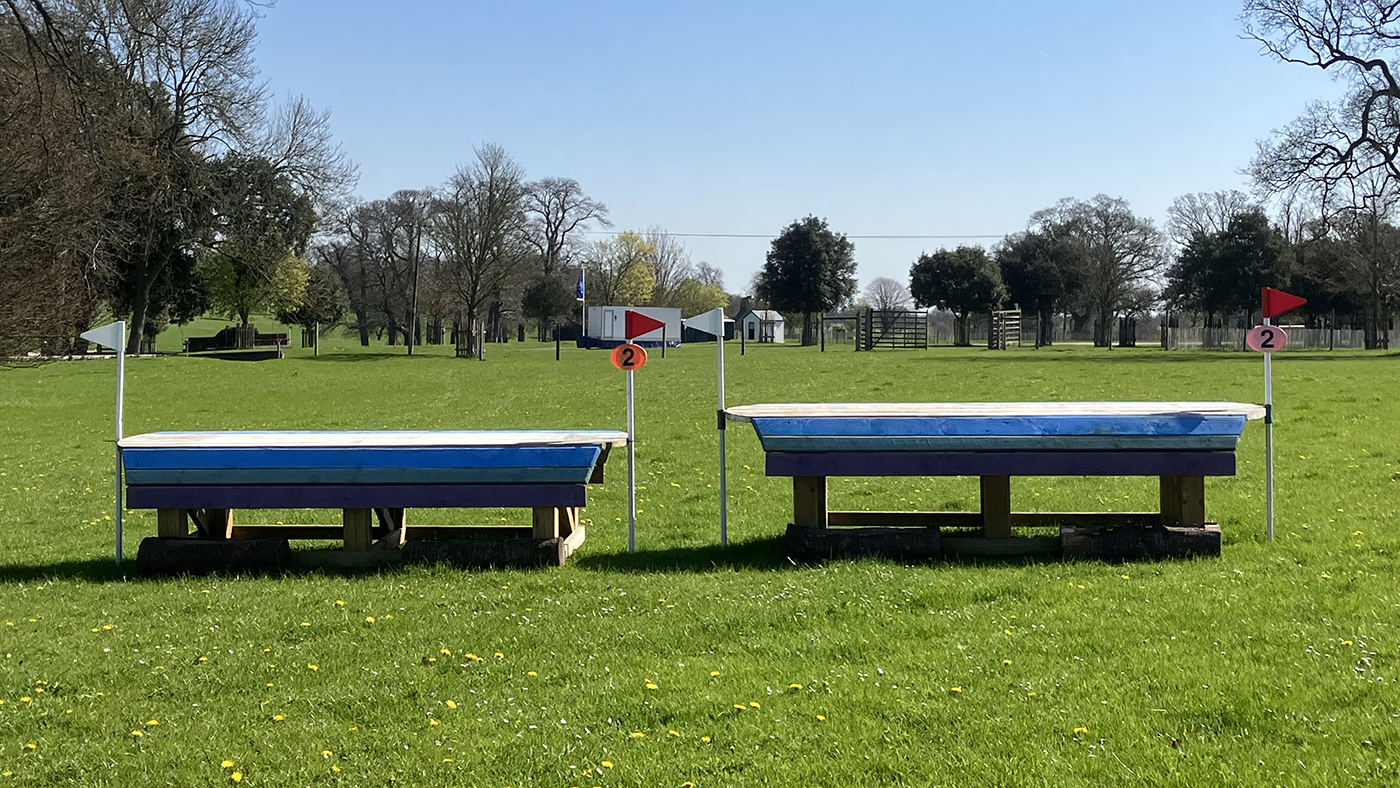
Fence 3 – KBIS Wall: a wall with undulating ground on the approach, so will riders need to use their heads to plan their route.
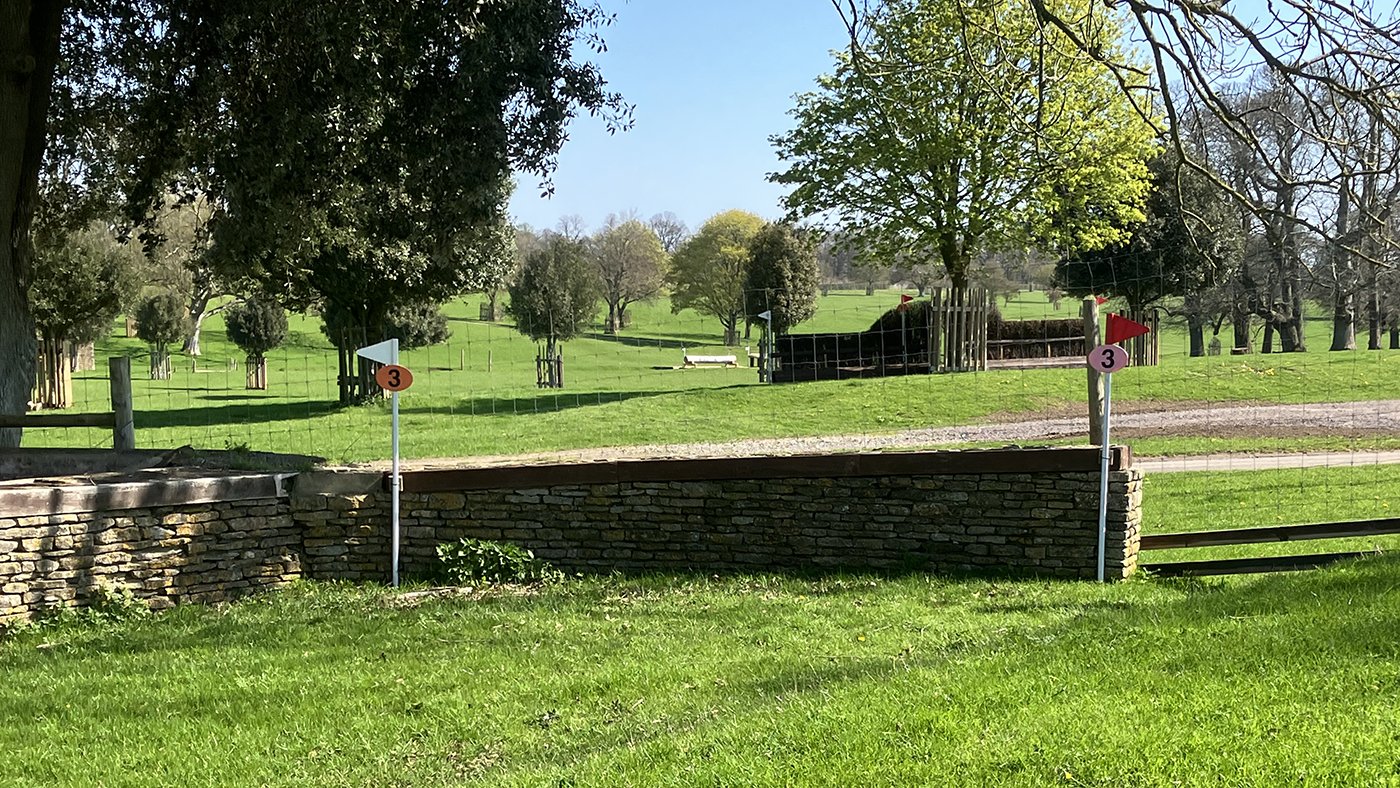
Paul says: “This jump is part of the same wall that the likes of Ginny Elliott and Ian Stark jumped across the corner in their heyday, which should make it an exciting moment for grassroots riders, but the difficulty here is the terrain on the approach.”
Fence 4 – Voltaire Design Brush: this follows quickly after landing from fence 3 and crossing the road. It is a brush fence on the top of the rise, with the ground dropping away on landing. The BE100 riders jump the right hand side, with BE90 competitors tackling the brush on the left.
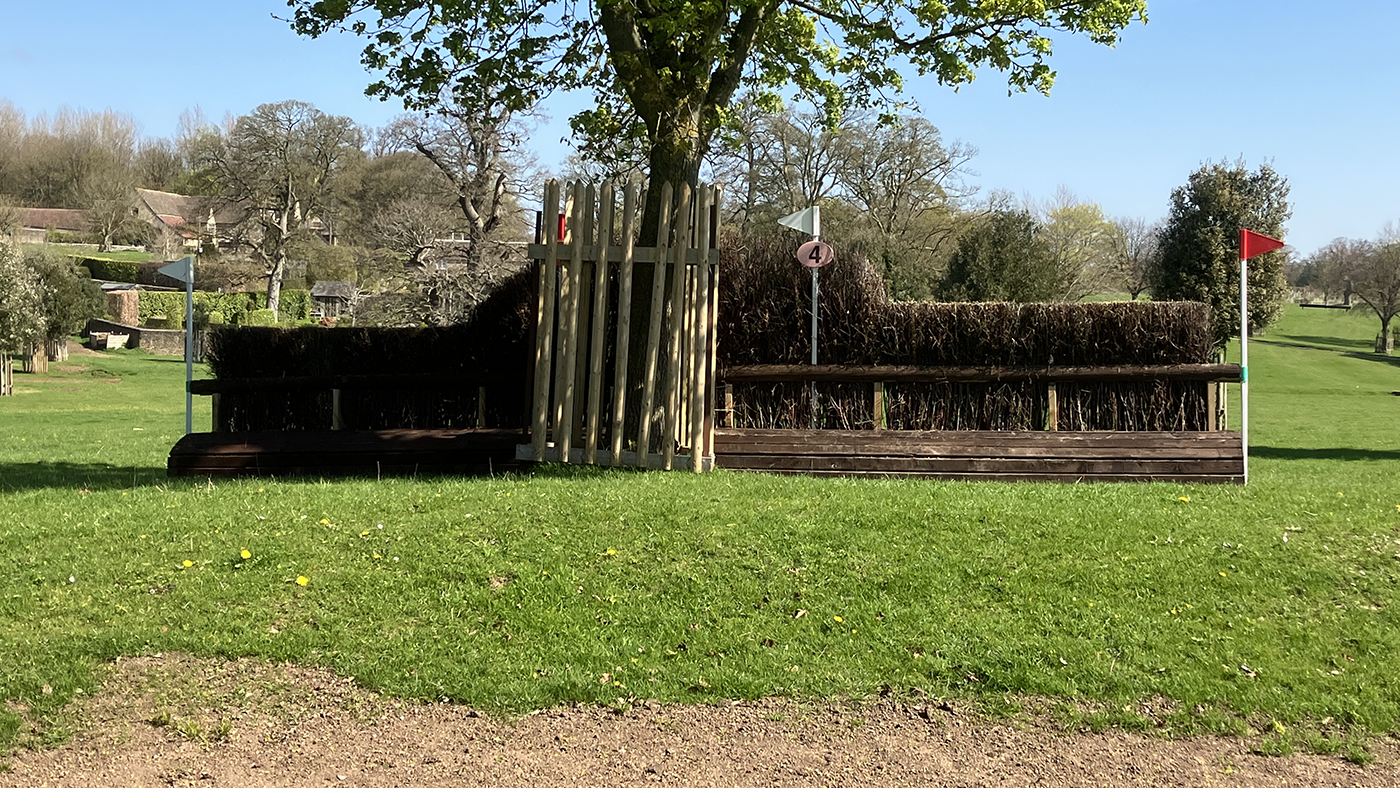
Paul explains: “There is a bit of work here for the riders early on the course, to find and hold their line, and they will need their legs on when they get there”.
Fence 5 – British Horse Foundation Trakehner: the BE90 riders then head slightly left down the hill to cross a bridge and jump a trakehner-like portable fence, which will have woodchips in the bottom of the structure to resemble a ditch.
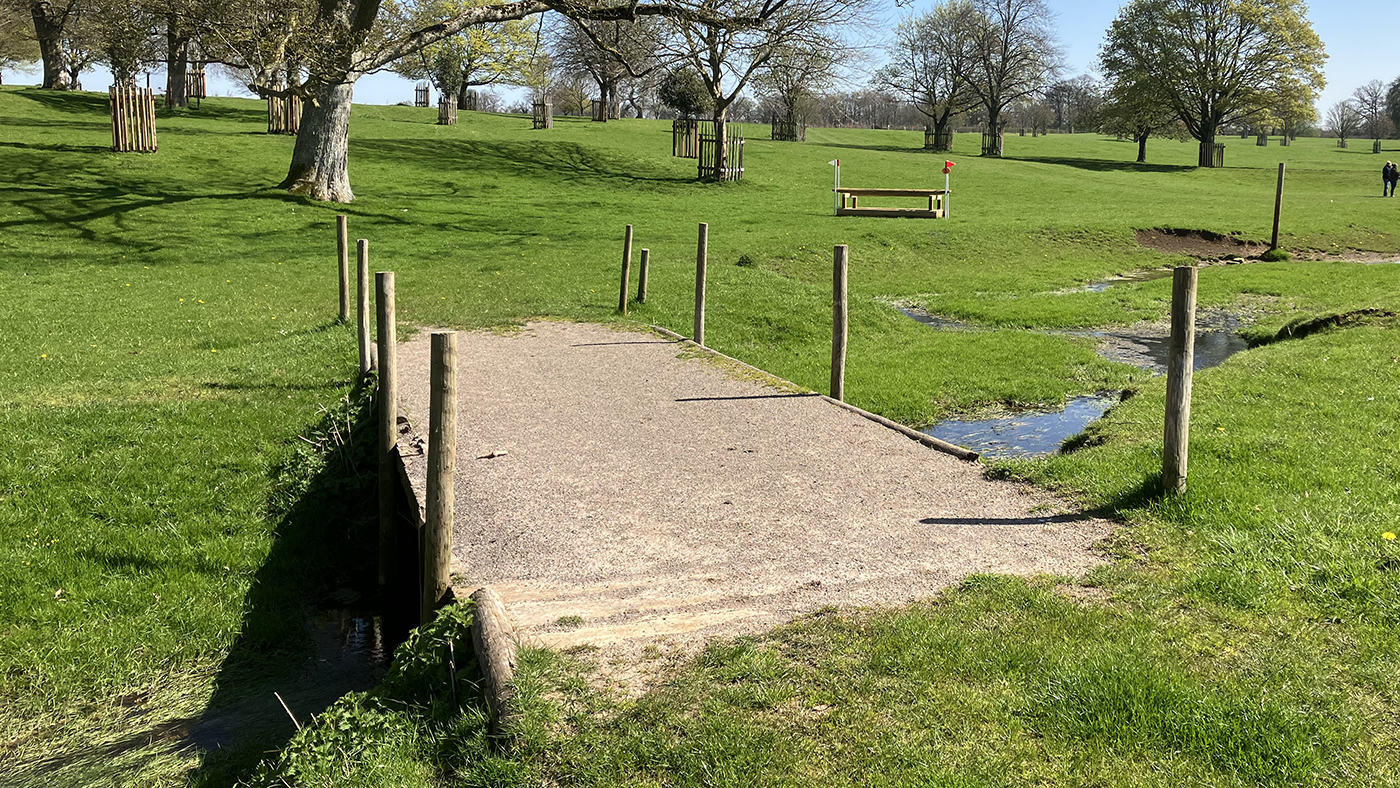
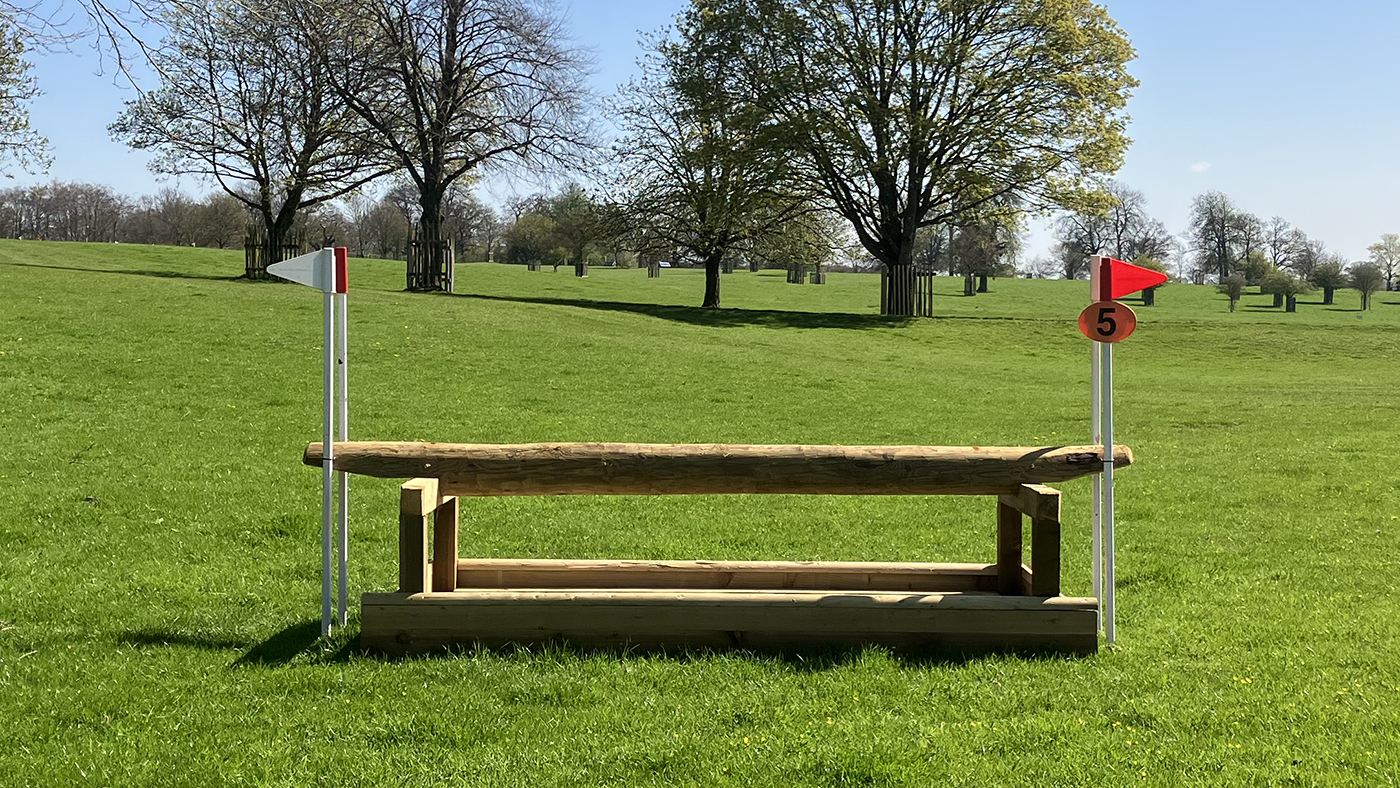
The BE100 riders follow a straighter line down the hill to the famous Keepers’ Brush ditch, which has been narrowed slightly and turned into a trakehner. The carved log was formerly used as a five-star fence at the road crossing, just before horses gallop back into the main arena. This is the first of a number of bravery questions on the course and the BE90 fence will be a black flag alternative for the BE100 course if needed.
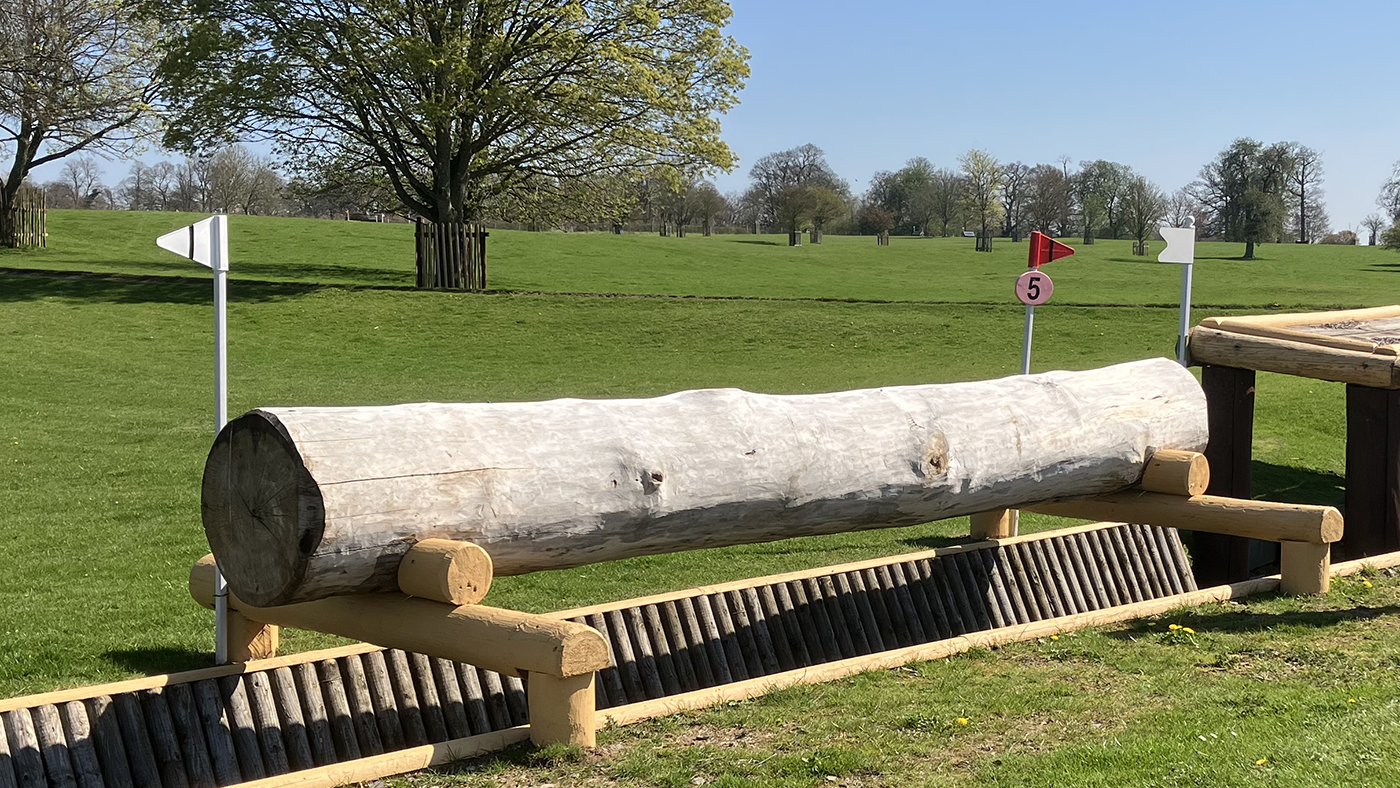

Fence 5 on the BE100 grassroots course is set over the famous Keepers’ Brush ditch.
Fence 6 – Badminton Beam: after heading up rising ground, riders will come to this beam fence, which is designed to help them set up for the rail-ditch-rail combination (seen in the background of the image below), which brings you into the meat of the course.
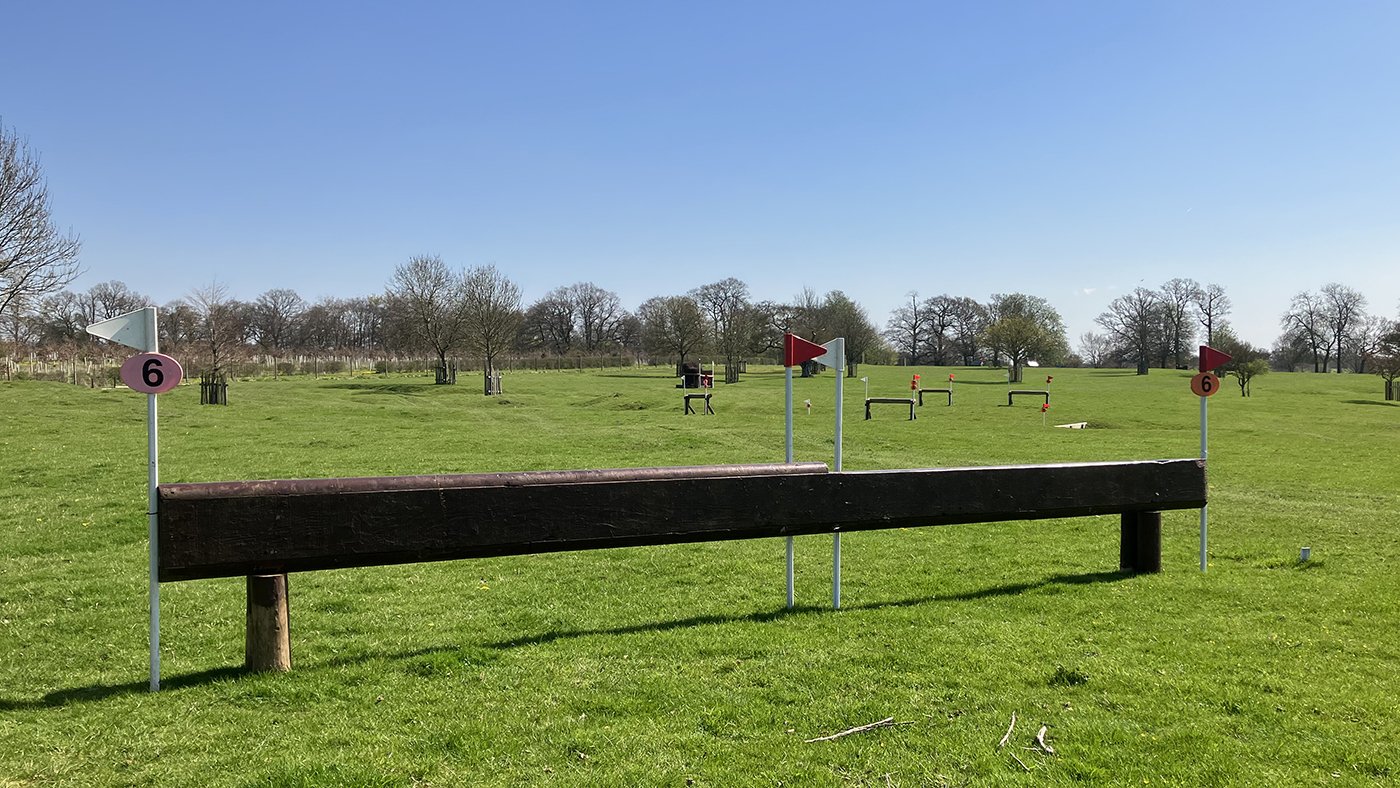
Fence 7ABC – Voltaire Design Hollow: this rail-ditch-rail question is a regular on the grassroots course, so it shouldn’t be a surprise for riders to see it again this year. The first challenge is to deal with the undulating ground on the approach to the first element. The BE90s then have a straight line through all three elements.

The line on the BE90 course (above) is straight through the three elements.
The first BE100 rail is at an angle to the ditch, which increases the technicality.

The line for the BE100 course at this fence is more challenging.
Paul Tapner says: “The BE90s have a fairly standard distance between the first rail and the ditch and the question is on a straight line. The BE100 is significantly more difficult, because of the line of approach and the rail is close to the left hand edge of the ditch, which might invite a run out, or a stop at the first element. It’s a good test.”

The ditch at B and the rail at C for both courses.
Mr Willis says: “How we dress the rail-ditch-rail can make a big difference to how it rides. When the course runs in this direction it is slightly harder, as you have so much more terrain in the first half of the course, so we will likely dress this fence to make it a bit easier.”
Fence 8AB – Lightsource bp Solar Farm: having tackled the first combination on the course, there is no time to relax as riders head straight into a two-part combination fence. Competitors will face two scaled down “solar panels”, similar to those used on the five-star course, either side of a natural hollow in the ground, which will test their balance and security.
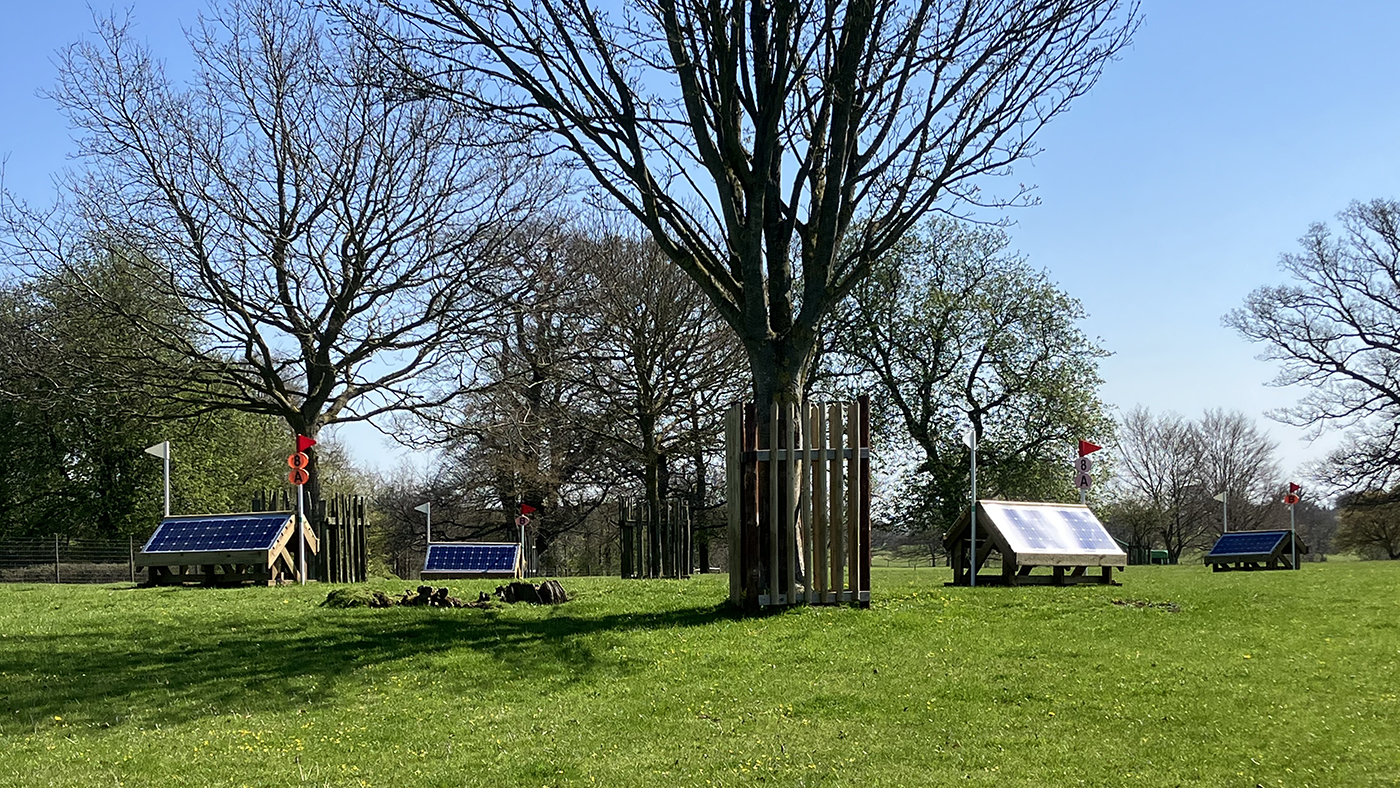
Once again, as you would expect, the BE90 question is more straight-forward, with extra distance between the two elements, which are on a slight bending line to the right.
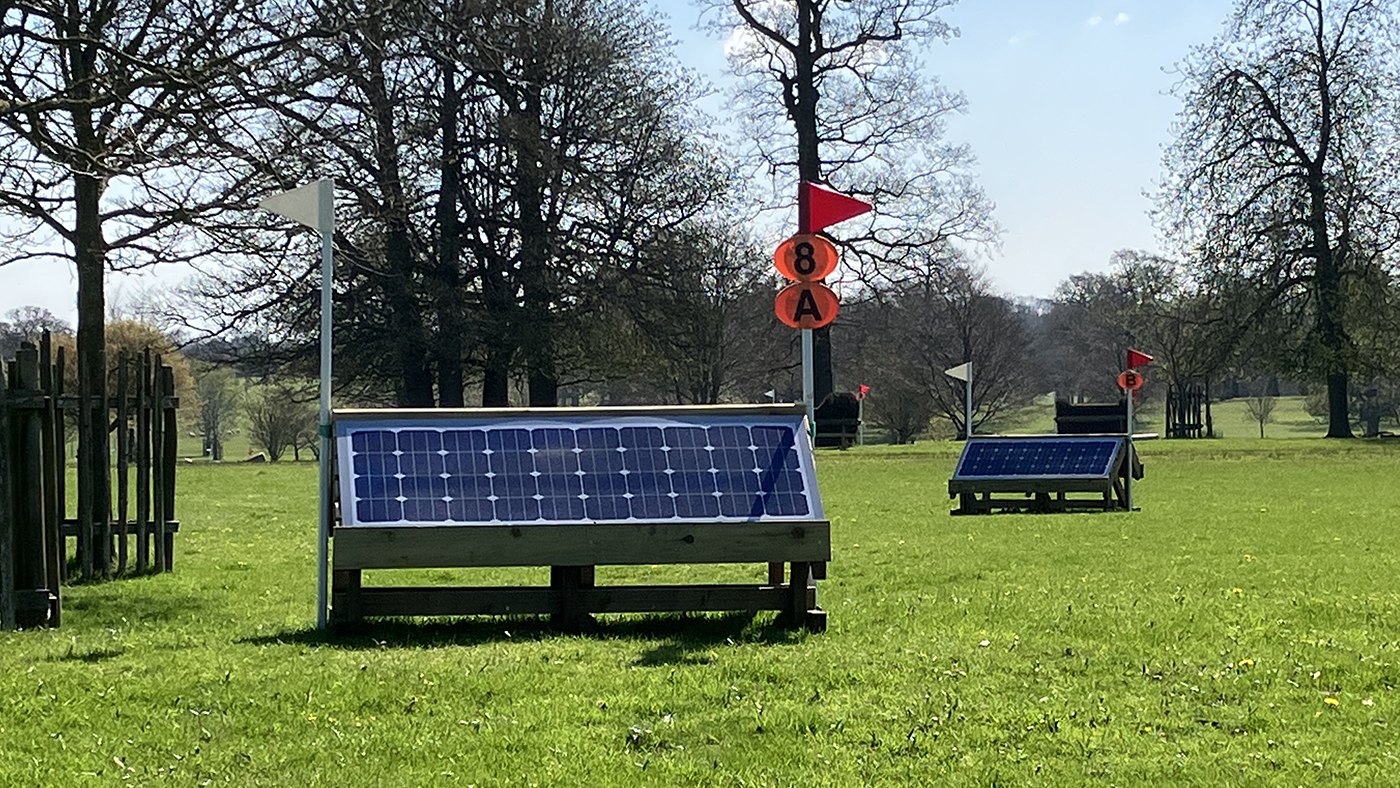
The BE100 fences are on a shorter distance with the added challenge of low tree branches to contend with between the two jumps.
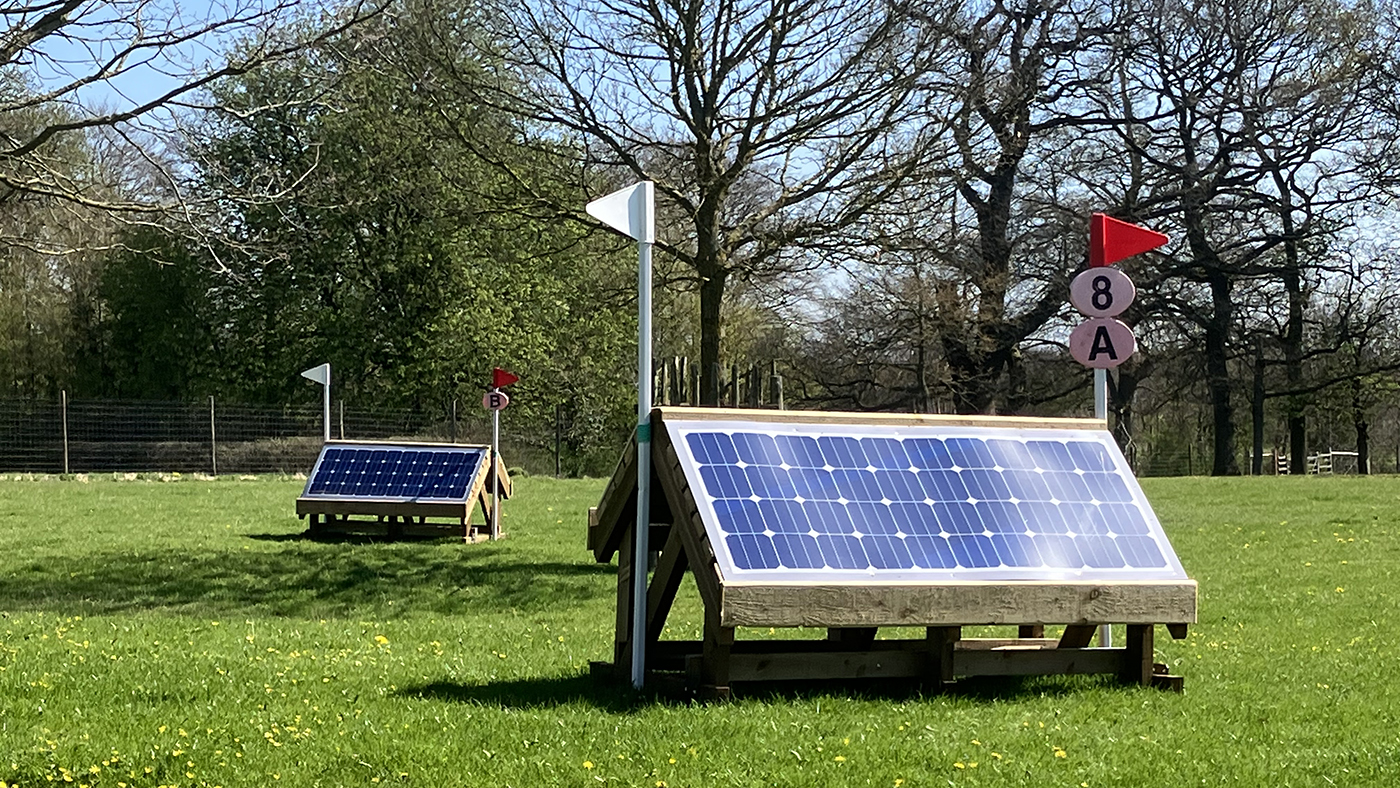
Paul says: “This is a great example of why you should walk your course at the same time as you’re going to ride it. The sun is really reflecting off the solar panels right now and as a rider you need to be prepared for that.”
Fence 9 – Bedmax Ditch Brush: a decent brush bravery question with a natural ditch towards and solid ground rail in front. The ground rail on the BE90 fence makes the ditch look deeper than it is.
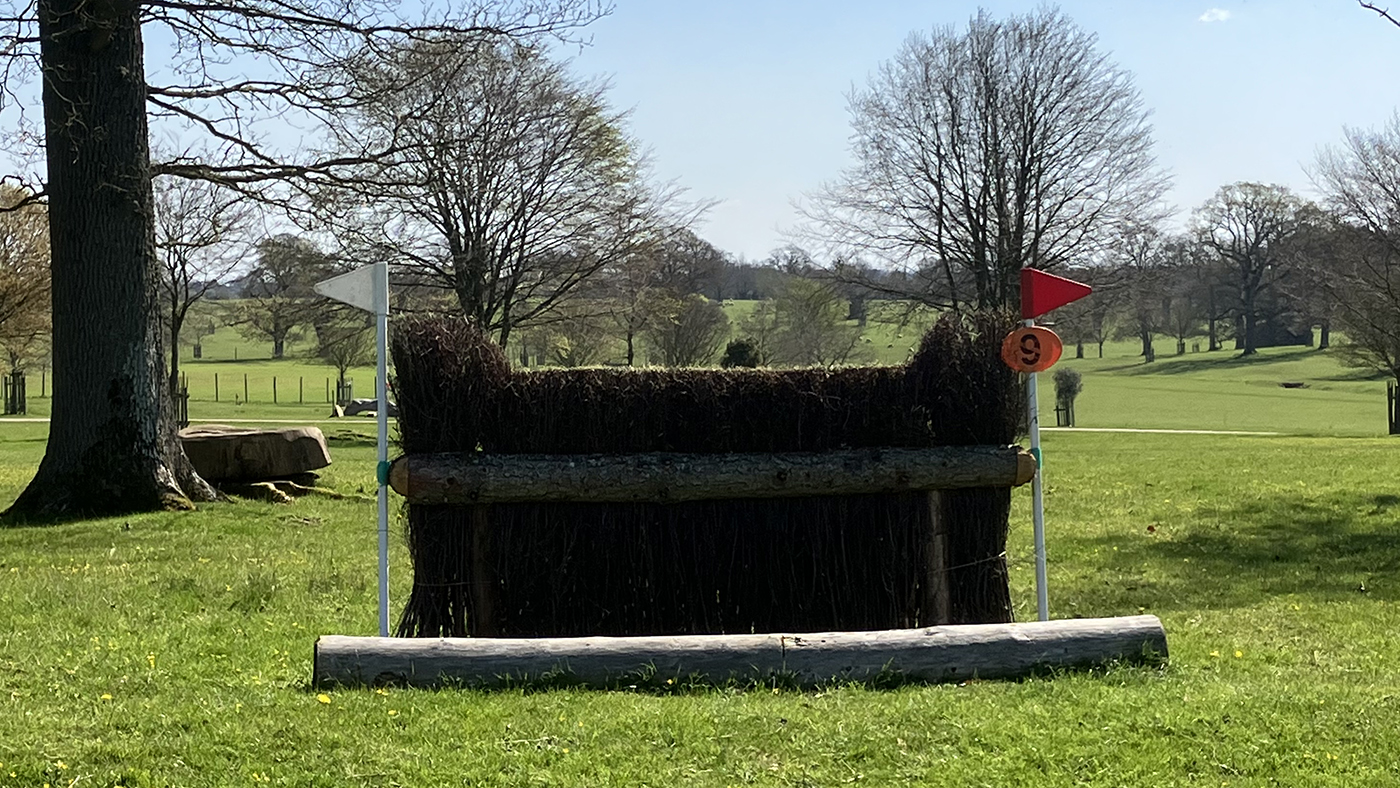
For the BE100 course, the ditch and brush are on an angle making it an accuracy question too.
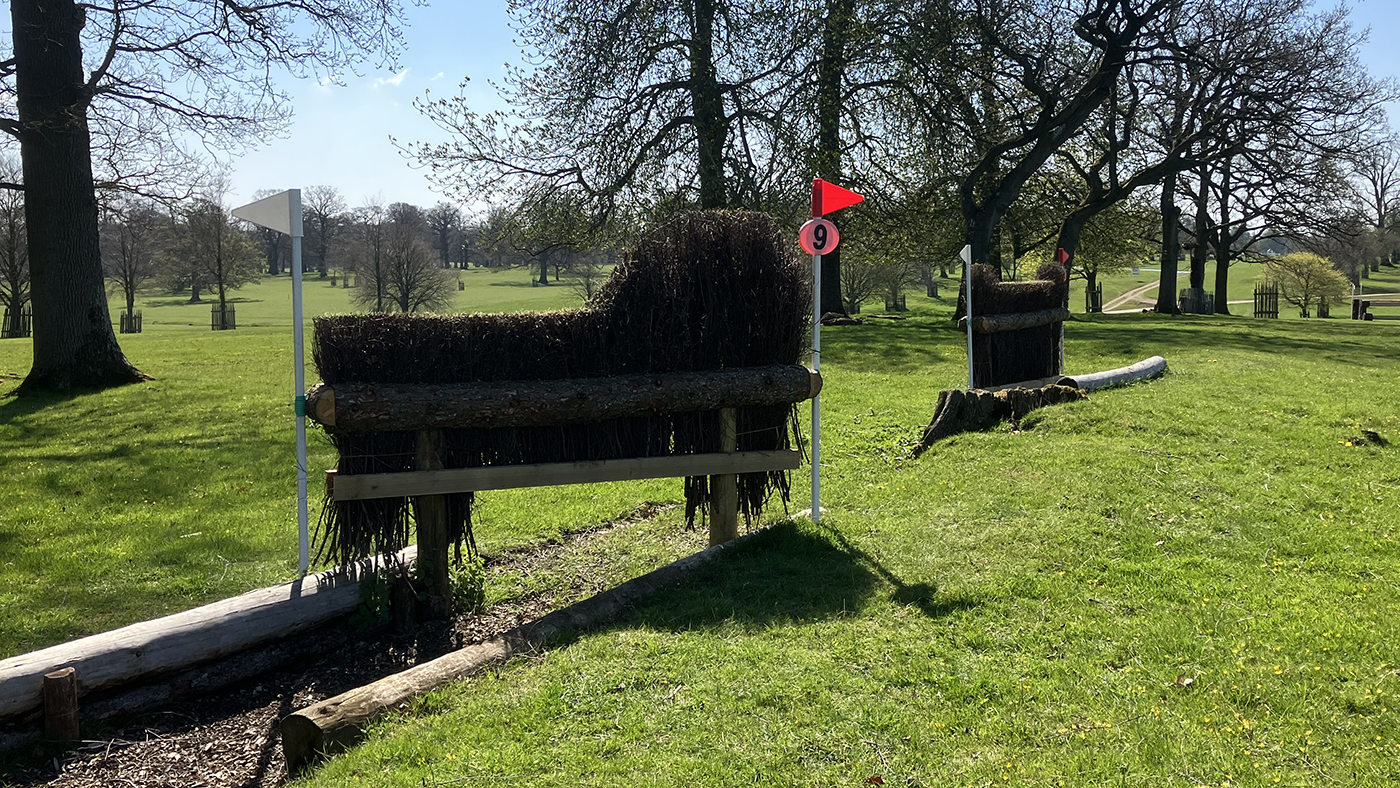
Paul says: “This is a proper test to see if you’re on a brave cross-country horse. Most BE90 horses will jump their fence as long as their rider can hold their line, look up and keep riding, but for the BE100 you need a horse that is ready for a championship at that level, not just any BE100 horse.”
Fence 10 – Equireel Log Trunk: continuing the themes of testing bravery, control and the rider’s balance and security in the saddle, a fairly innocuous looking log is set just before the lip of some falling ground, which is quite steep for the BE100.
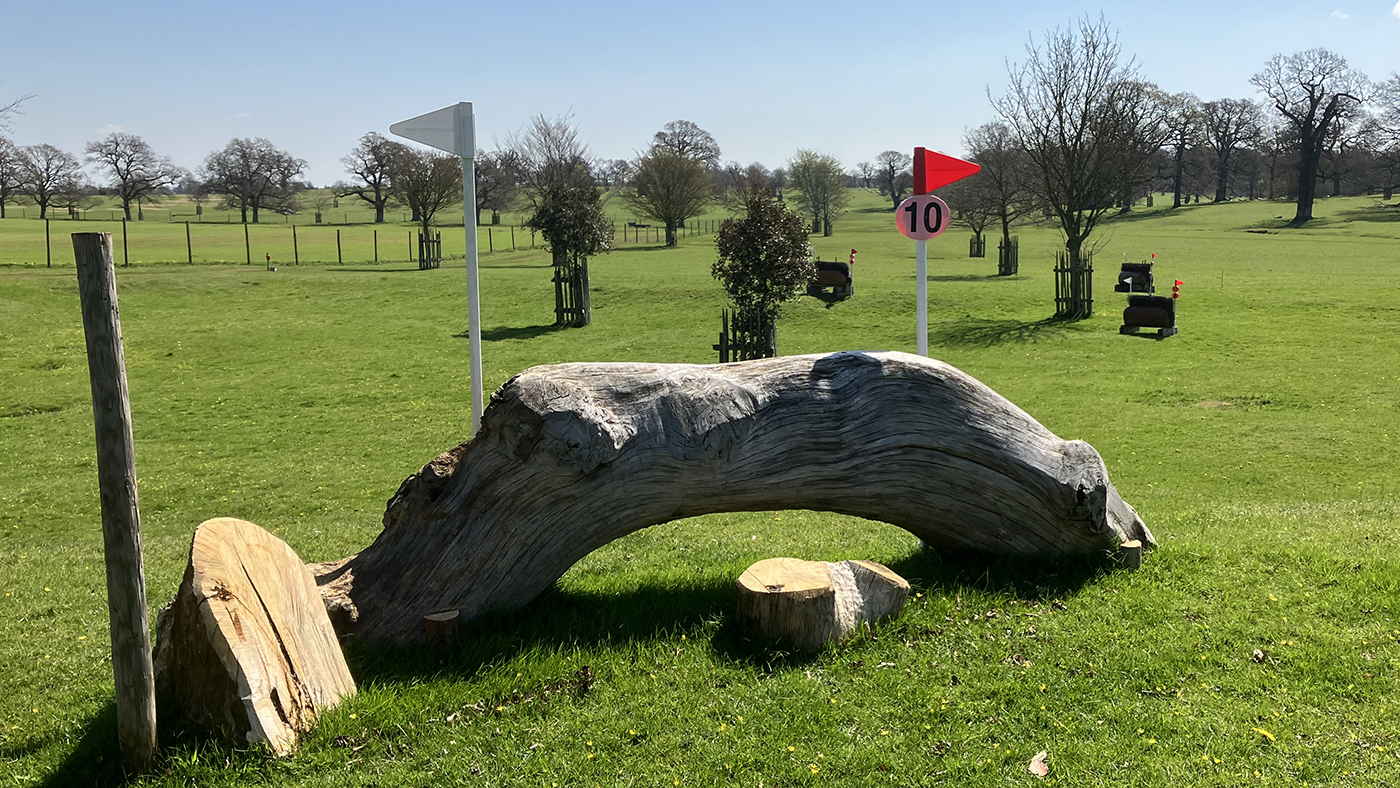
The BE90 is a similar but easier question with more flat ground to land on before moving down a less steep slope towards another accuracy question on a right turn.
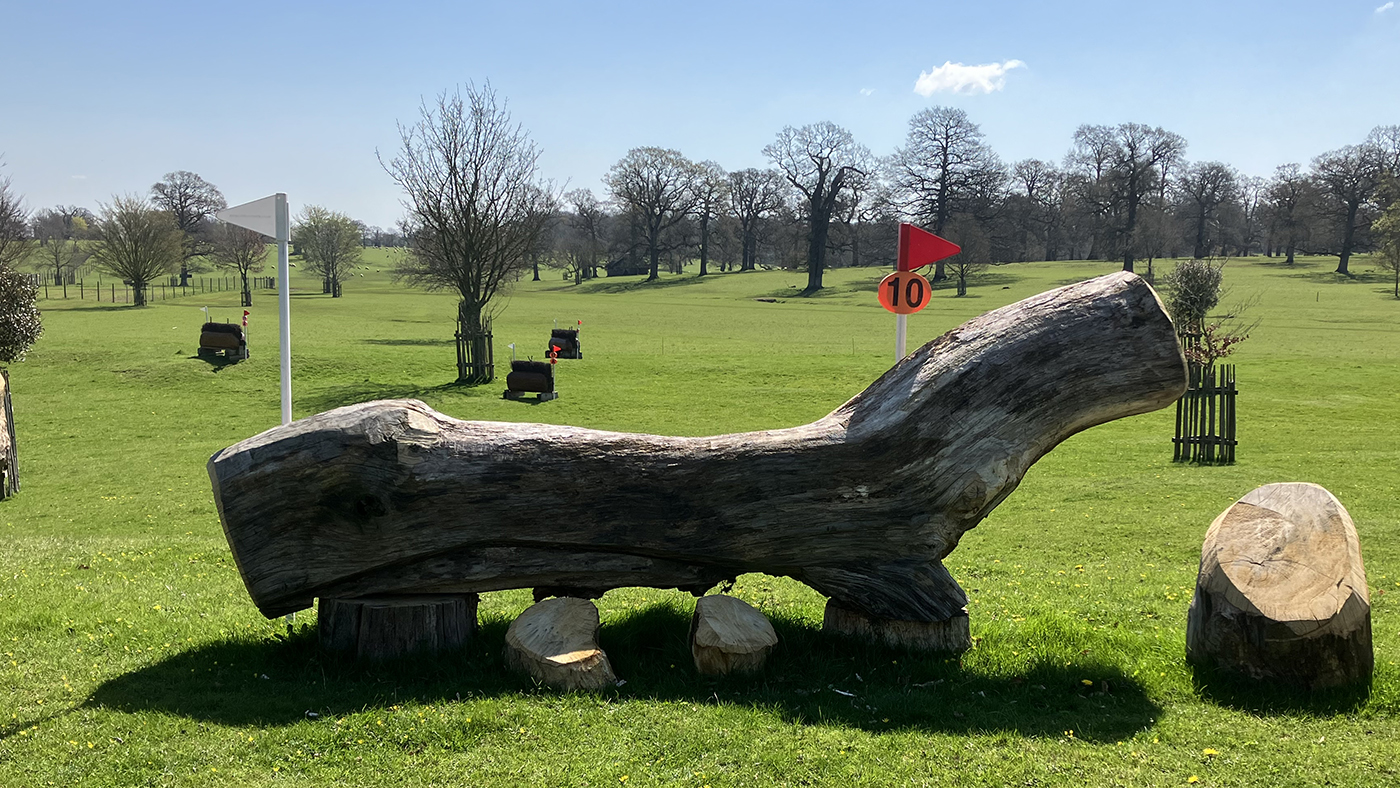
Paul says: “Another bravery question, and the riders need security in their position. The horse needs to pop over nicely so they land on the flat ground. It’s a proper cross-country fence, but should be straight-forward on a brave horse.”
Riders then have to negotiate more undulating ground on the way to two skinny brush fences, which come up quickly after fence 10.
Fence 11AB – Air Ambulances UK Brush: once again the course designer has been clever with his placement of these fences. The BE100 on fence 11A is placed on the top of a hillock with the ground running sharply away on the right hand side. The distance from A to B walked on an open three strides, but how it rides will depend on how the horse jumps the first element.

The BE90 question here is on flatter ground with more distance between the A and B elements, giving riders more options on the line they wish to take.
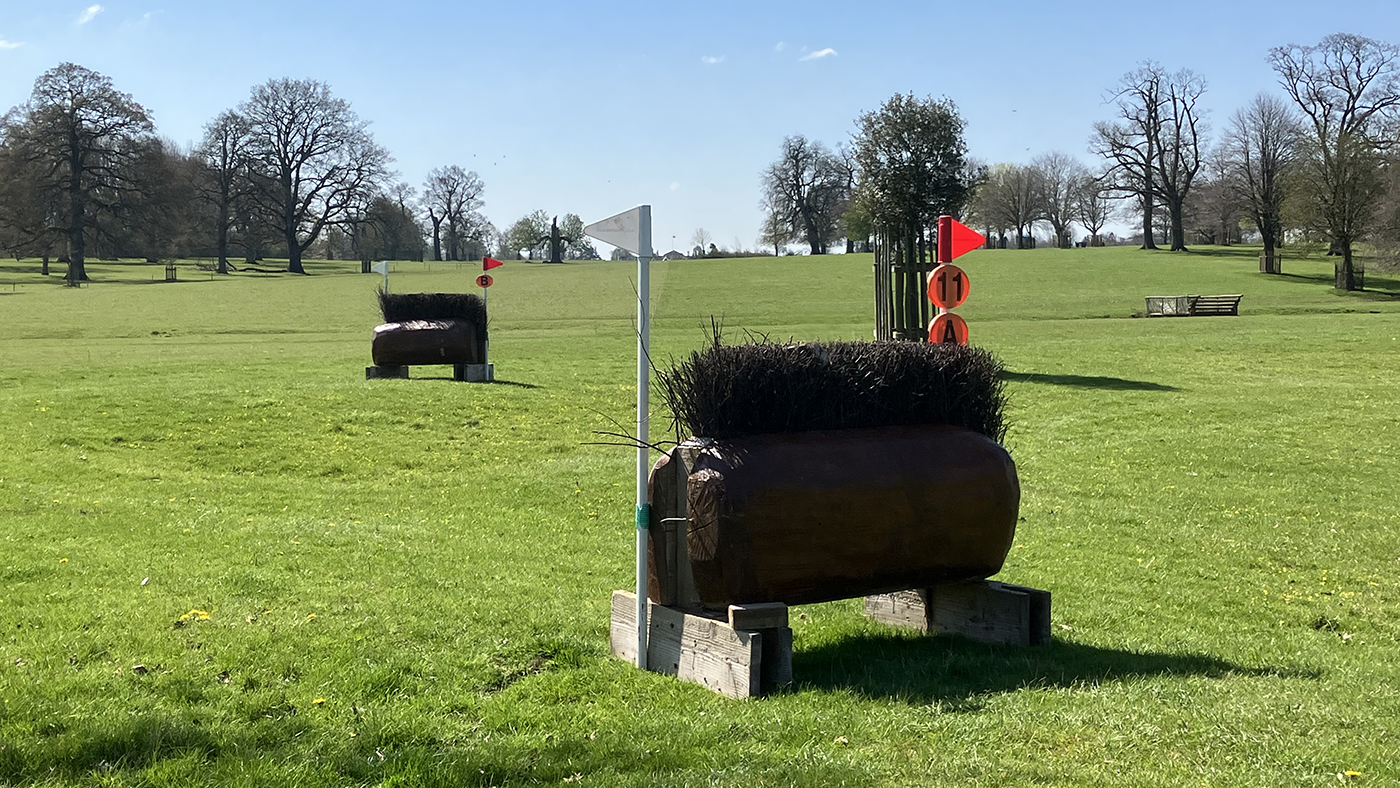
Paul says: “Riders here need to react to what happens over the first fence, rather than expect to ride a set number of strides. If they have an up-down jump at the first, a slight bend in the line may help B come up easier. If you’ve had a few dodgy jumps along the way, this might be where the cumulative effect of that on the horse’s confidence is seen”.
After some serious accuracy questions, riders can look forward to a couple of big bold fences on the Badminton grassroots cross-country course.
Fence 12 – Spillers Open Oxer: open oxers fitted with MIM clips for both courses. The BE100 has a narrower front profile, but is not truly skinny so both the fences should ride well. From here riders head up the avenue towards Badminton House, but this isn’t the time to start admiring the view.
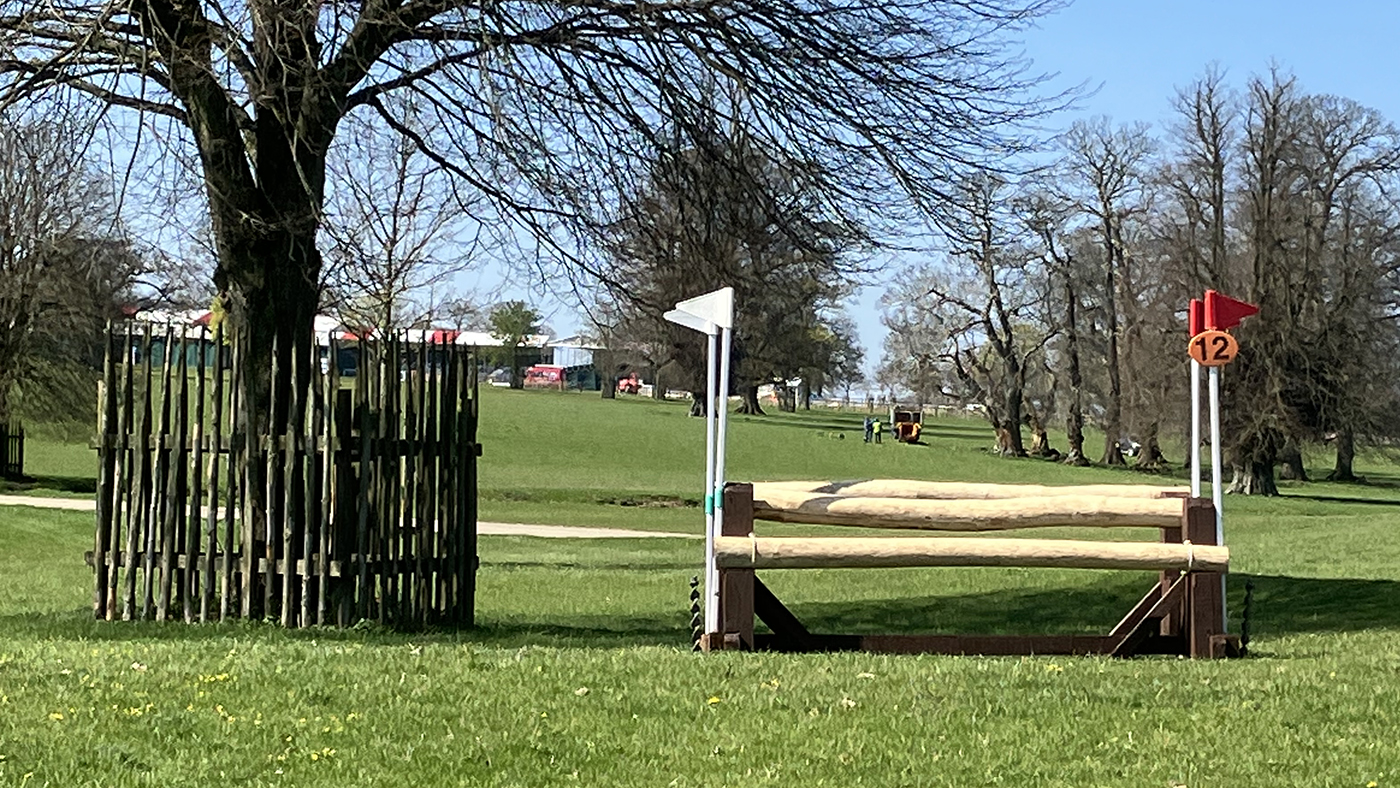
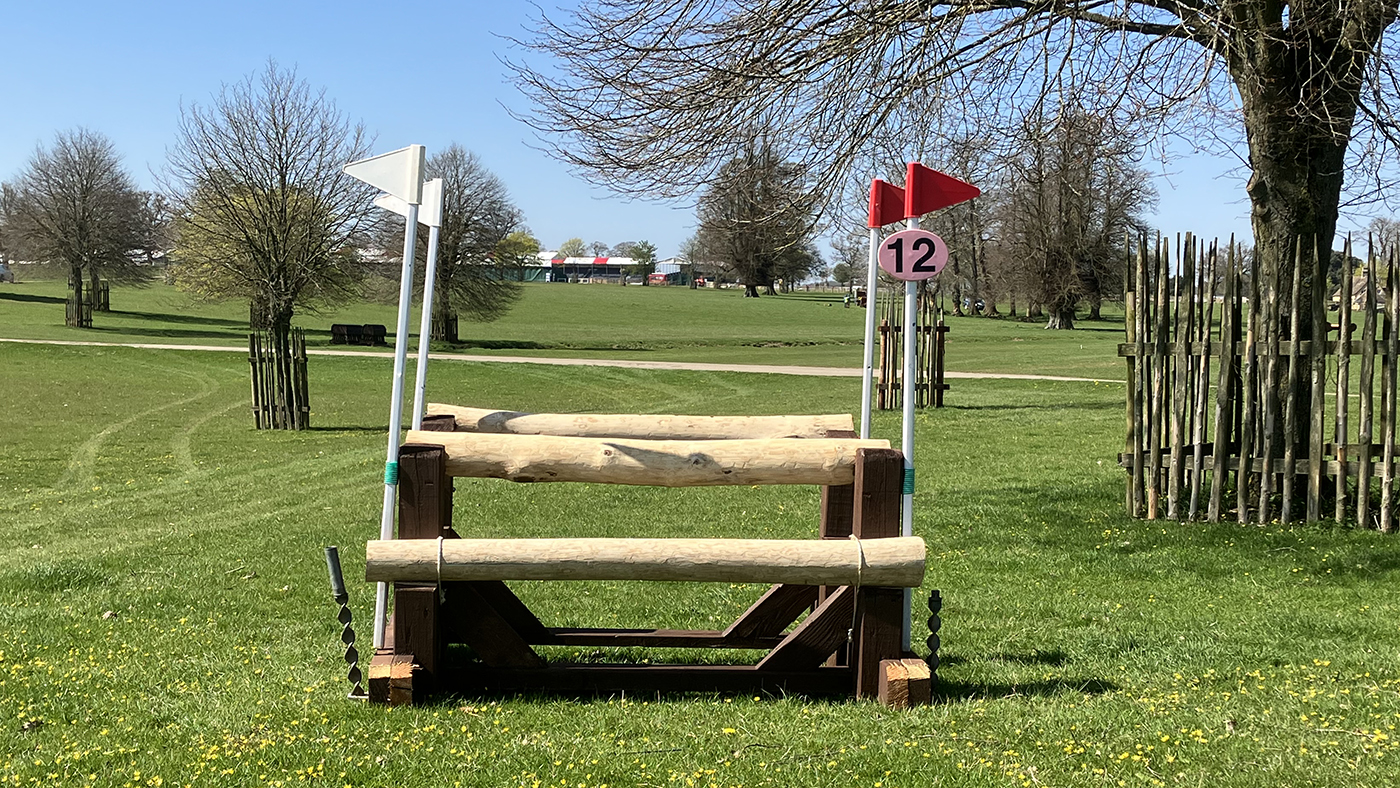
Fence 13 – Wiltshire Brewers Drays: the haycarts are a straight-forward fence, but one of decent dimensions. The horses will have just pulled up the hill so Paul warns it’s likely they will “be starting to feel their lungs – and their riders may be starting to feel a little bit tired too”.

The “wings” of the haycarts will be fixed to each side when the course is dressed. The next question can be seen in the background.
Fences 14 and 15 – World Horse Welfare Stables: two separately numbered solid houses and what Paul describes as a “very significant question”. Those hoping to be competitive will look to take the short route, which is to jump across the left-hand corner of the first house close to the white flag, then take a right hand turn to the second skinnier house out.

Course designer James Willis and Paul Tapner discuss fences 14 and 15 on the BE100 course.

The direct line on the BE100 course over fence 14 with fence 15 beyond the tree.
Those who are less experienced, feel their horses are running low on petrol, or who have had a few uncomfortable moments on course so far, may be wiser to jump the first house straight on, then circle without risk of penalties to jump the second house.

Fence 14 on the BE90 course, with fence 15 located behind the additional obstacles.
On the BE90 direct route, there are some additional obstacles strategically placed between Fence 14 and 15 to help the rider find the ideal route and distance to Fence 15.

Fence 15 on the BE90 course showing the obstacles on the right hand side.
Paul says: “It’s important that riders have trained their horses to canter past jumps and other dressing on their approach to a fence without spooking or losing their attention, ready for situations like this.”
Fence 16AB – Bloomfield Horseboxes Gates: The Coronation Corral is a similar question to the one posed to the five-star riders, being two white upright gates on a turning line. The gates are pinned and the course will be strung so riders approach off a right hand turn that continues through the corral.
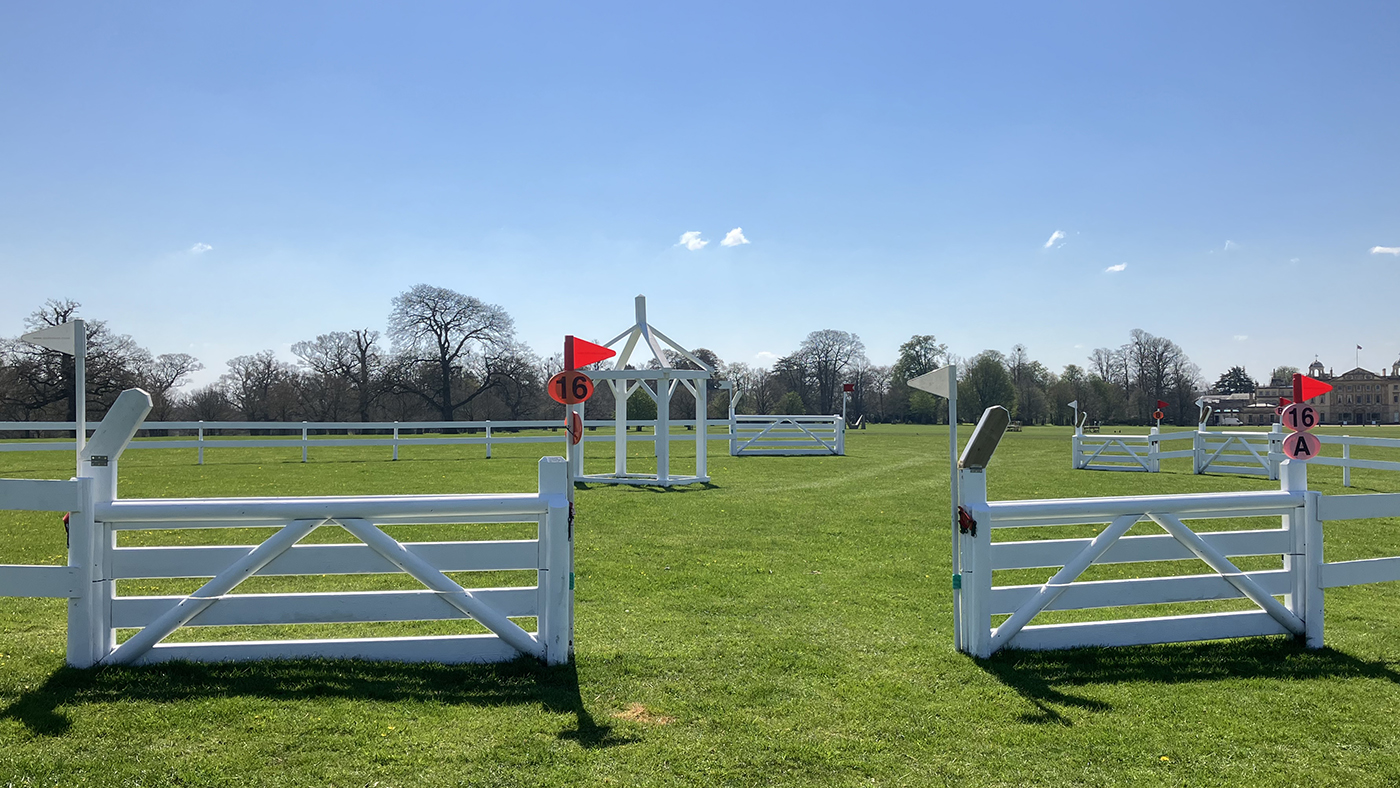
Paul warns that while this fence looks straight-forward it “should not be disregarded in terms of difficulty”.
Riders then gallop across the park to the foot of the famous Badminton Lake on the Badminton grassroots cross-country course.
Fence 17 – CrossCountry App Table: a filled in oxer that acts as a set-up fence to get the horse’s attention before riders ask them to get their feet wet at the water.
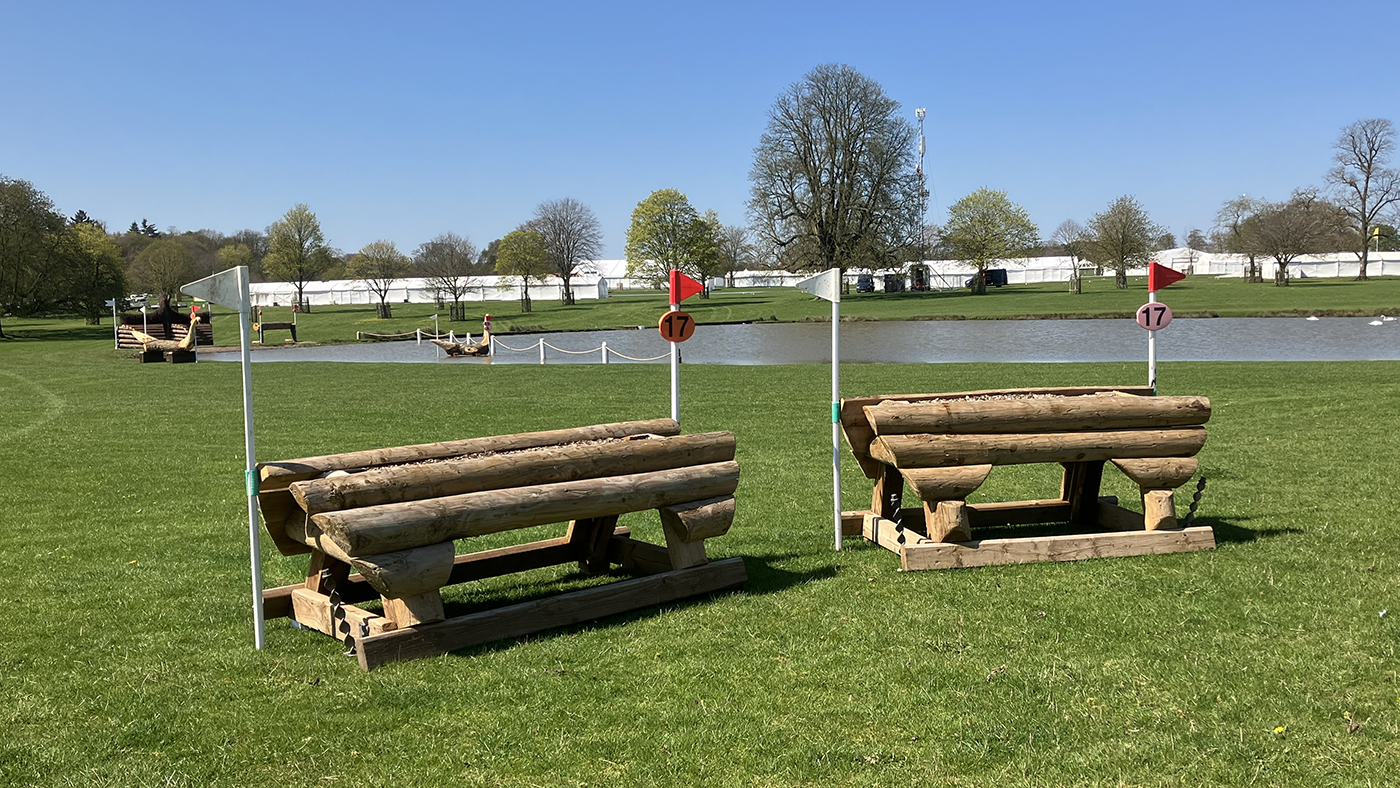
Fence 18ABC – Voltaire Design Lake: For the BE90 competitors, a beautifully carved swan is set just off the lip of the water, giving a small amount of dry land to land on before stepping straight into the water.
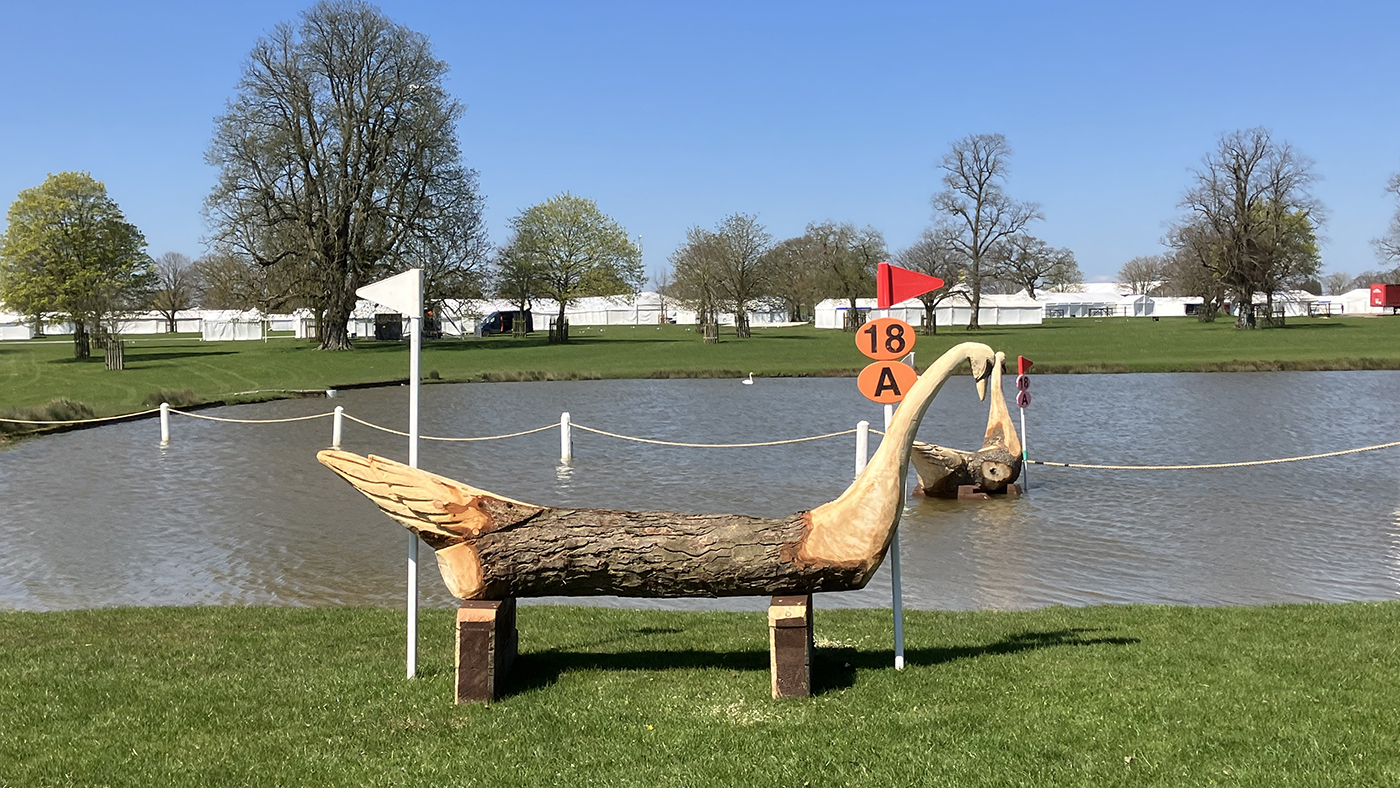
The course then turns left (one of the few times riders turn left on the course) to a hanging rail, which has been hollowed out and is fitted with MIM clips at B, with the ground dropping away on landing.
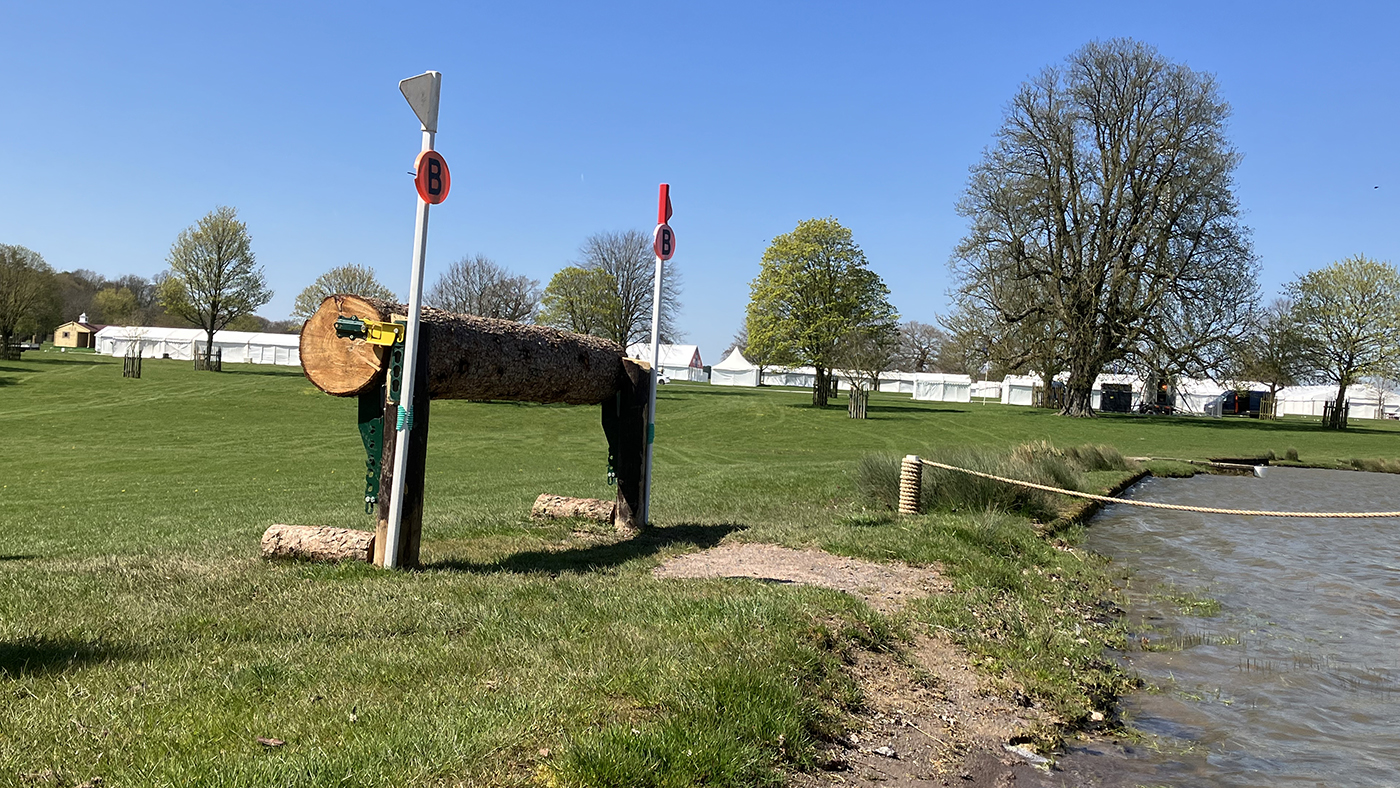
Continuing the left turn, a shoulder brush element at C completes the question here.
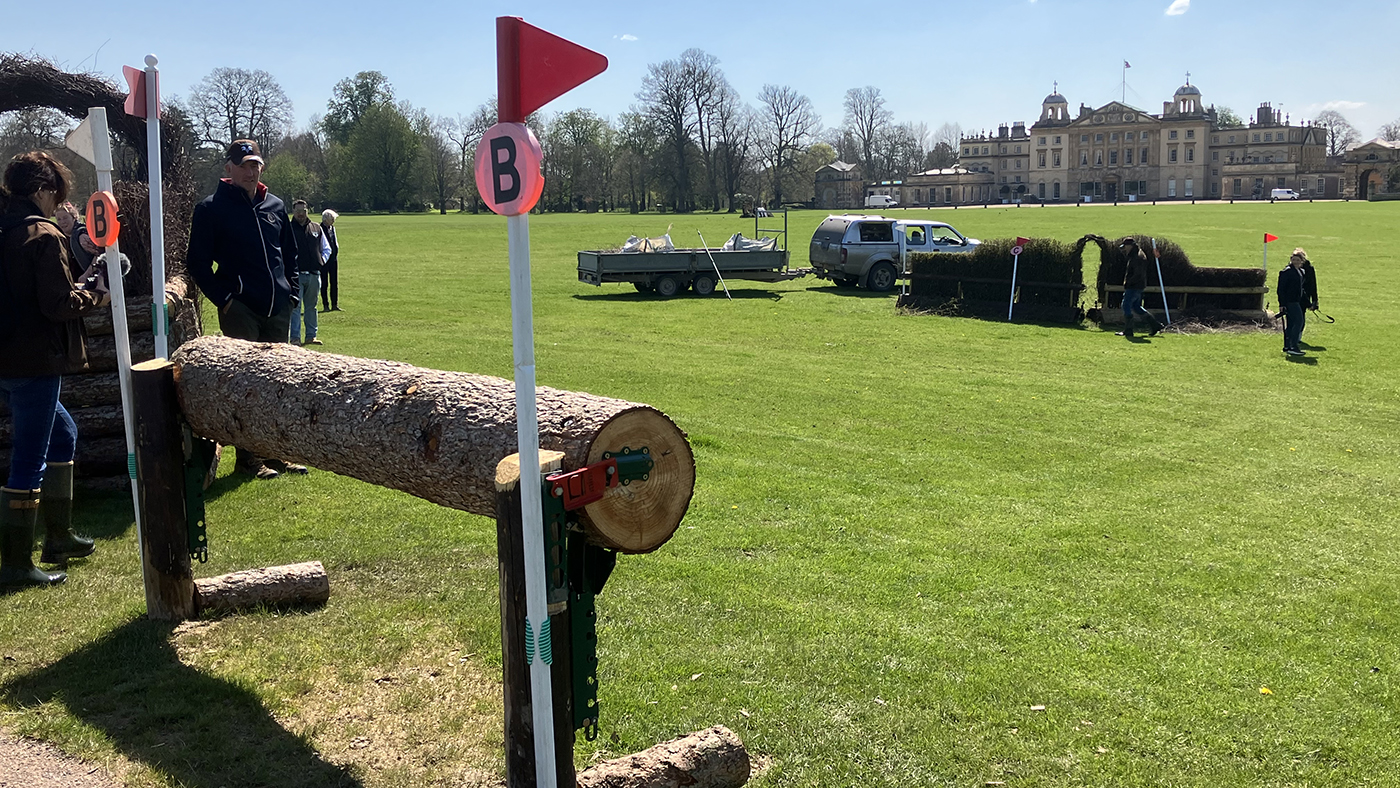
For the BE100 riders, there is a small swan to jump in the water – a question that is rarely seen at BE100 level. An smoother curving line than the BE90 riders face brings them to the same hanging rail, followed a more challenging line to their shoulder brush on the left hand side at C.
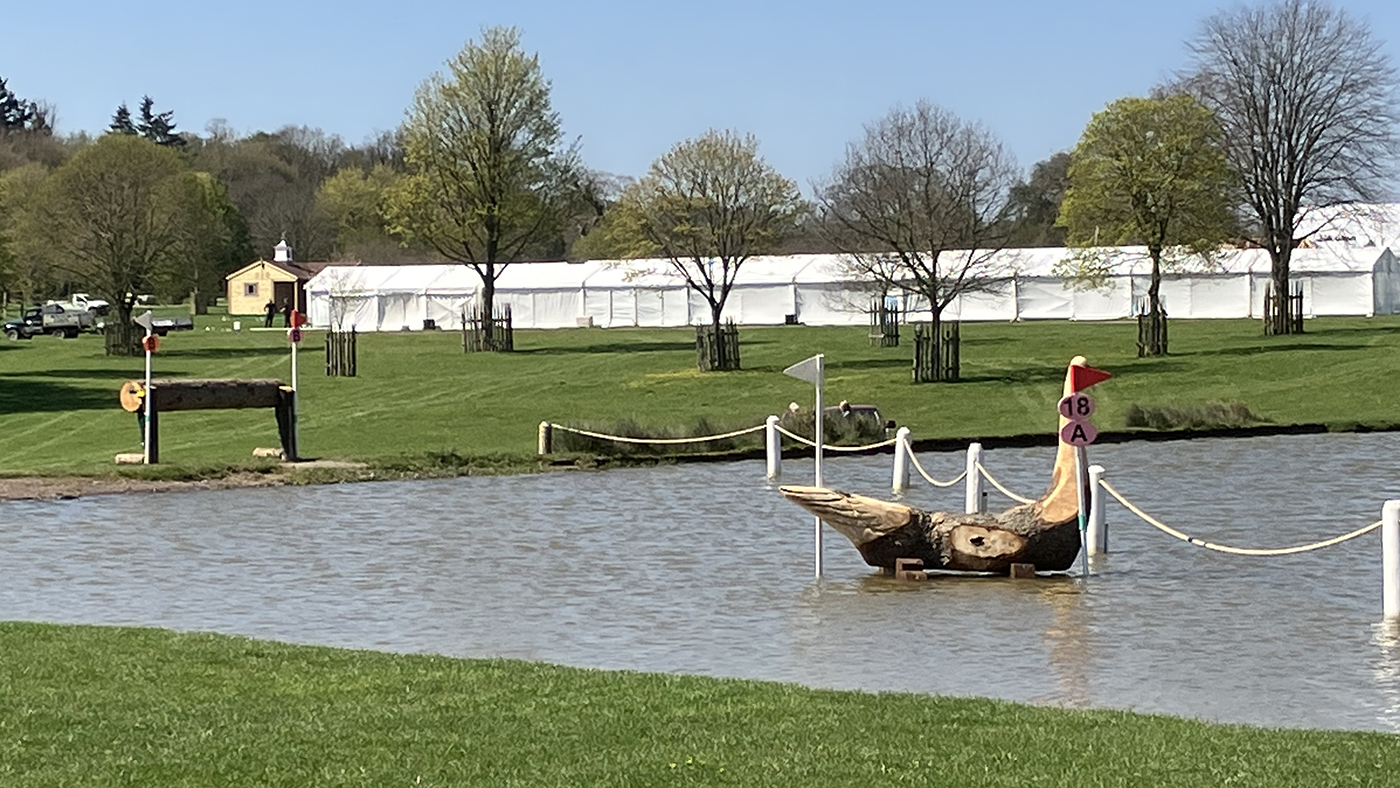
Because this is labelled ABC no circles are allowed between the fences so riders will need to really nail their line to complete without penalties.
Paul says: “This is one of the few places on the course where I think the BE90 question is more challenging for combinations of that level than the BE100 question is for its riders.”

The shoulder brush fences at 18C from the landing side. From this view the BE90 fence is on the left and the BE100 on the right
Having jumped through the Lake, riders can enjoy heading into the home stretch of the Badminton grassroots cross-country course.
Fence 19 – Voltaire Design Saddle: the straight-forward saddles at fence 19 will be positioned to give the perfect photo opportunity as riders jump it with Badminton House in the background. This fence is framed by beautiful horse heads carved by Peter McGregor of the course building team.
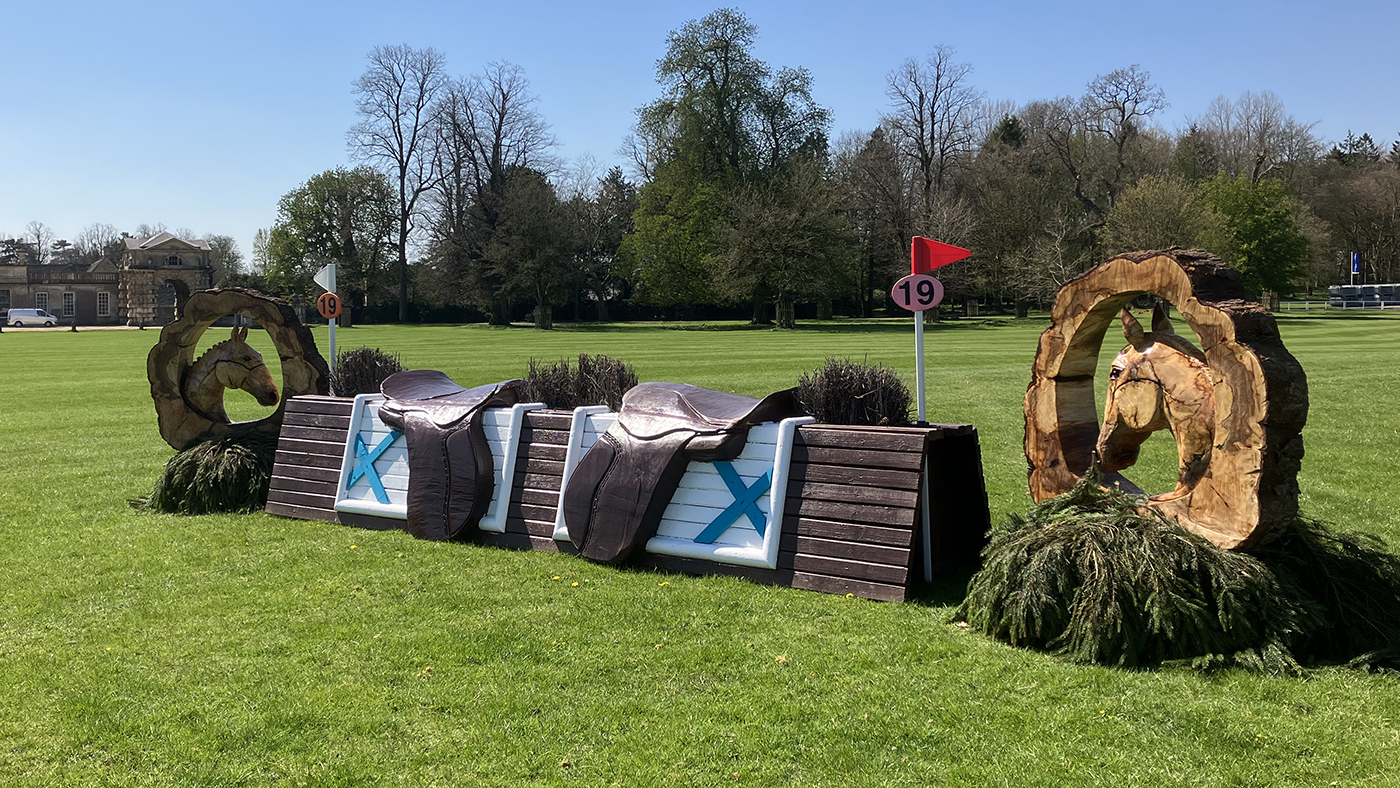
Fence 20 – Retraining of Racehorses Brush: having left the parkland behind them, riders can “run, jump and enjoy” this rolltop with brush behind, which looks far less imposing from the front profile than it does when viewed from the side. “Riders have now got the guts of the course behind them and they should get a good feeling over this fence,” says Paul.
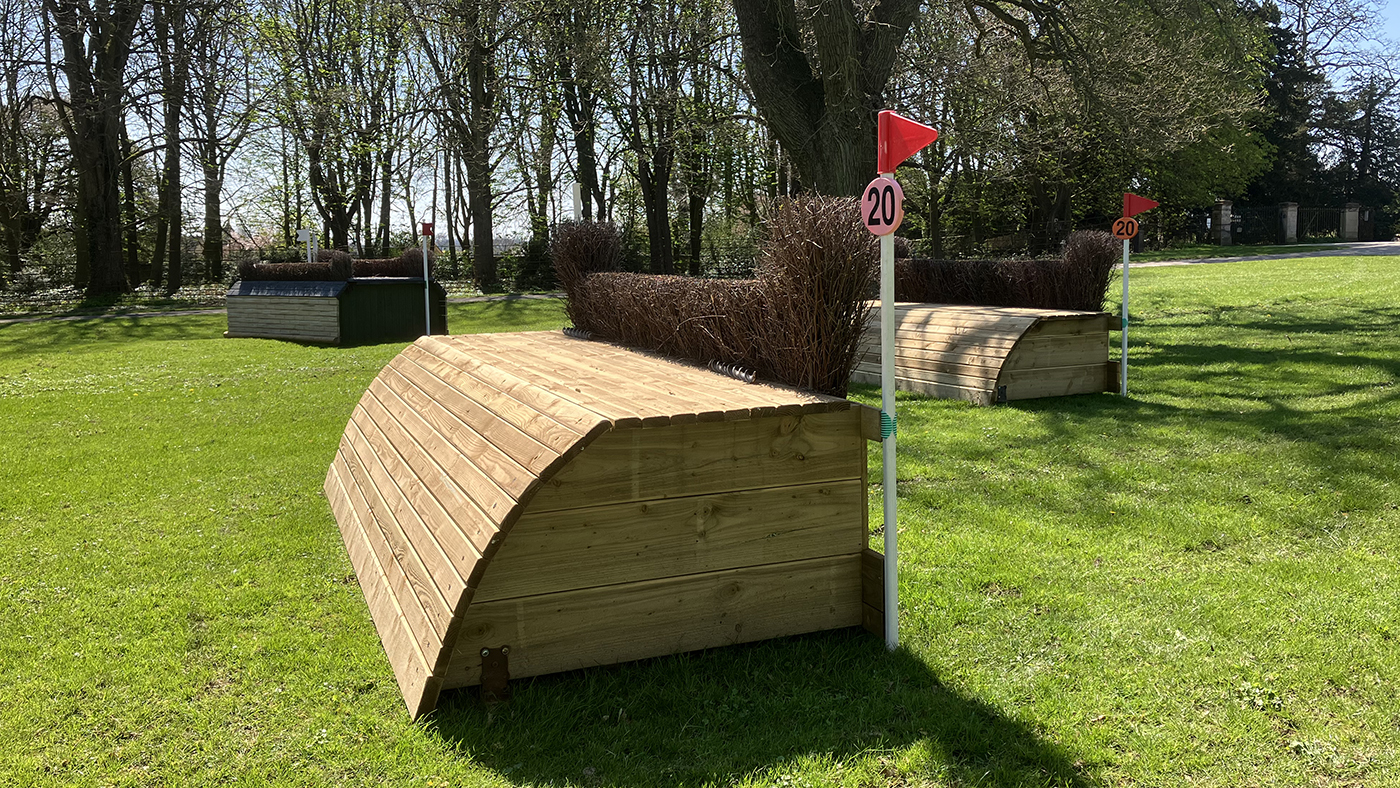
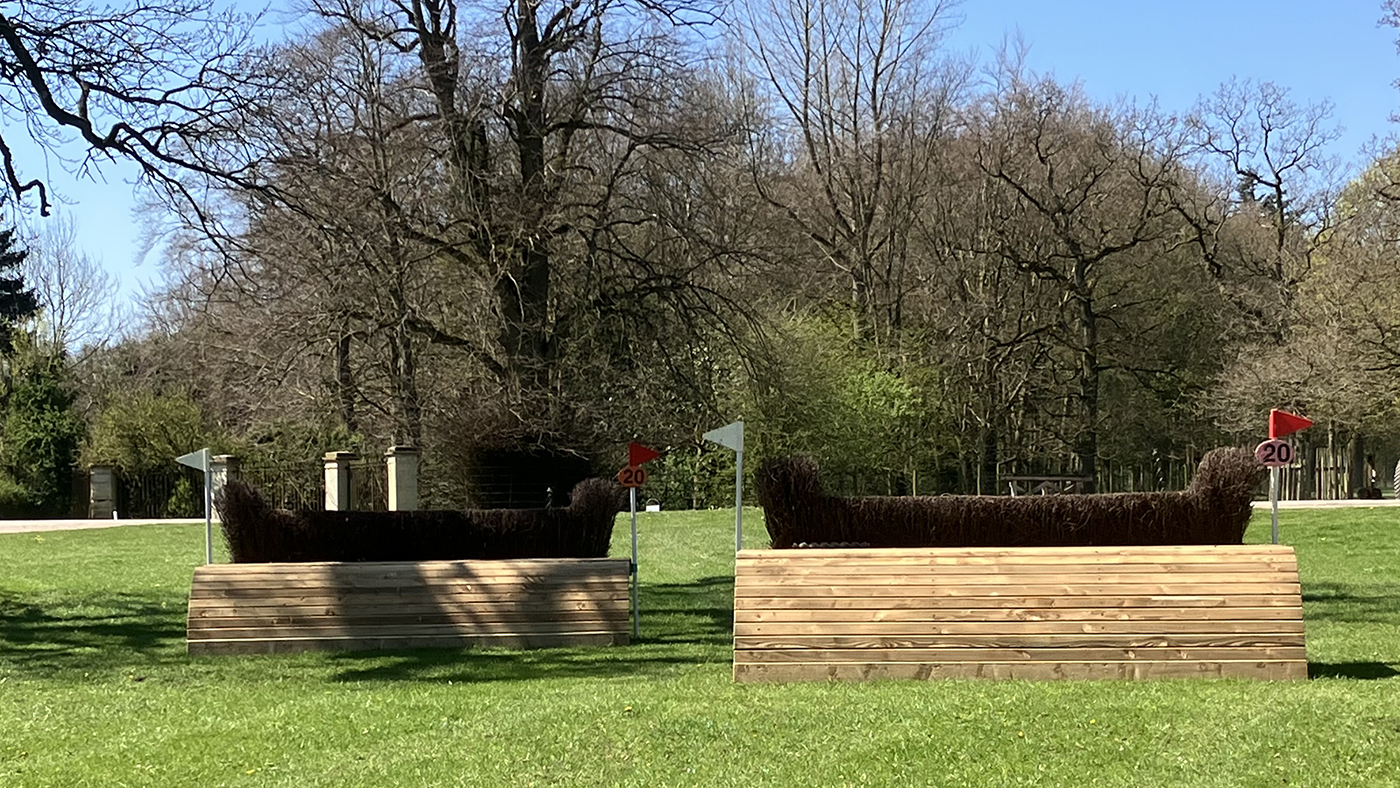
Fence 21AB – Mars Equestrian Tree Trunks: this final combination fence on the course utilises two trees that blew over in the park during a storm to form part A. Then a left turn brings you to a skinny triangular arrowhead that will have some brush on the back edge once the fences are dressed.
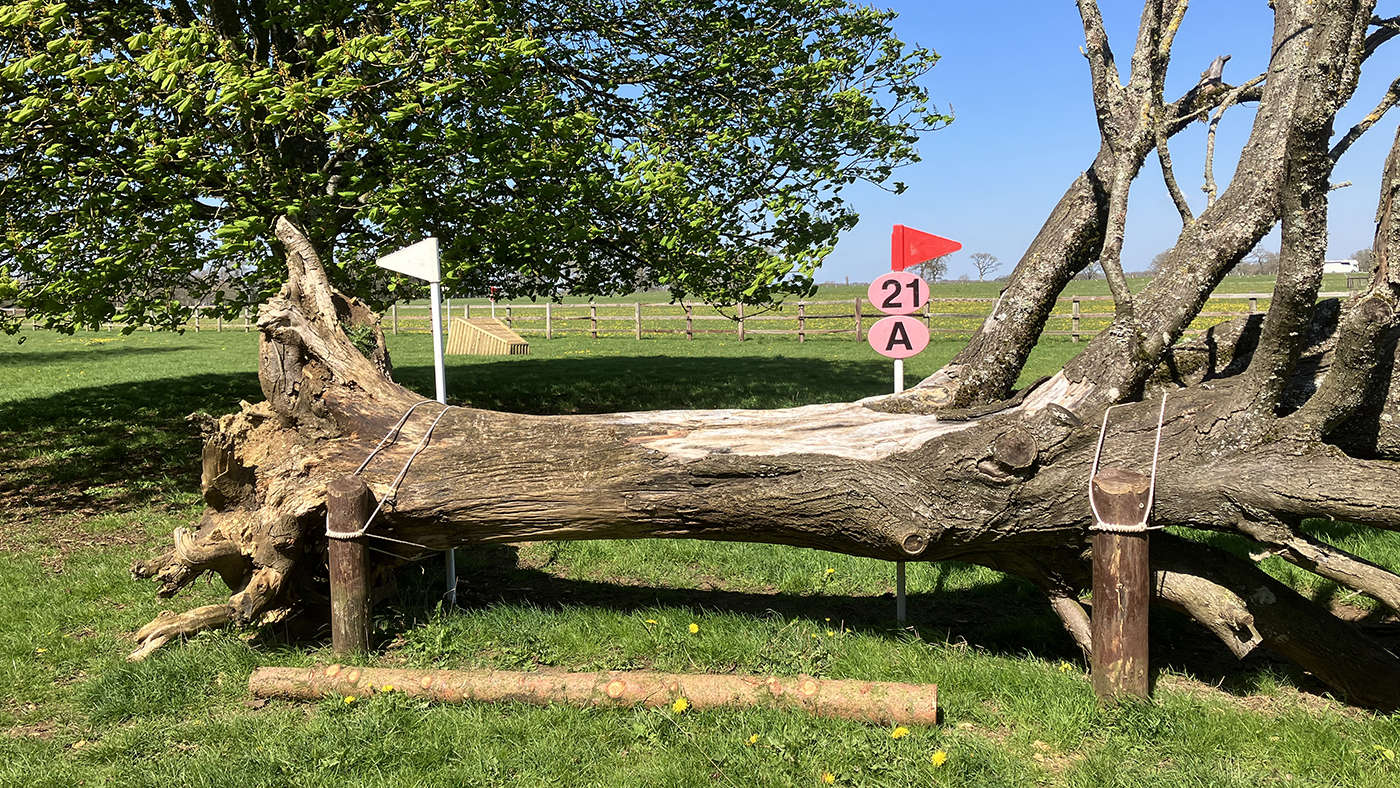
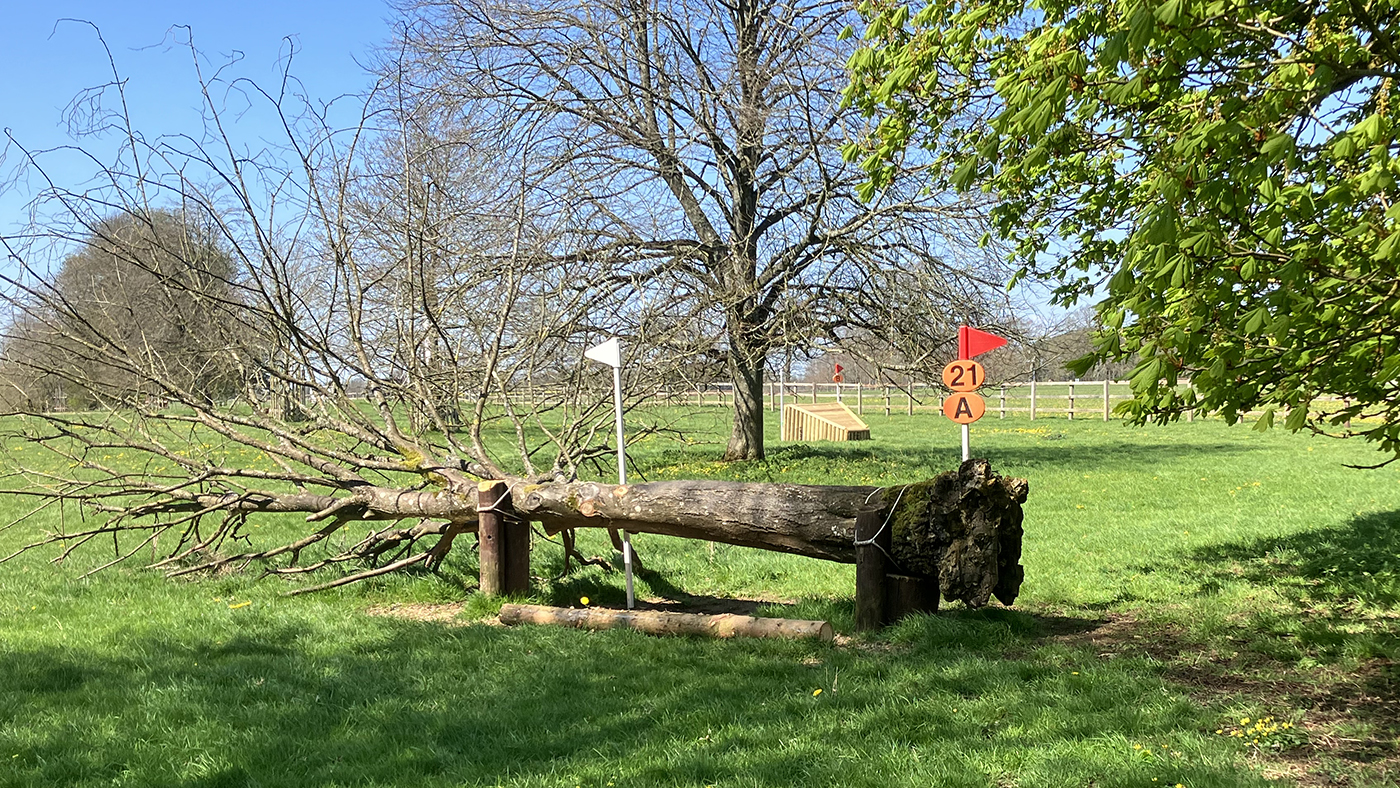
Paul says: “I like the reuse of the trees and that they are not too dressed – there is no mistaking that they are a fallen tree. It reminds me of being a kid riding my pony in the woods finding fallen trees to jump, or now as an adult spotting things to jump while out in the car.
“I’m not surprised to see a triangular arrowhead on the course – I’m only surprised we didn’t have one earlier. It’s good that the course designer is testing riders all the way to the end of the course.”
Fence 22 – Voltaire Design horseshoe: a straightforward fence to finish, but riders shouldn’t relax too soon. Paul recommends riders “treat the finish flags as your last fence” to help keep their focus.
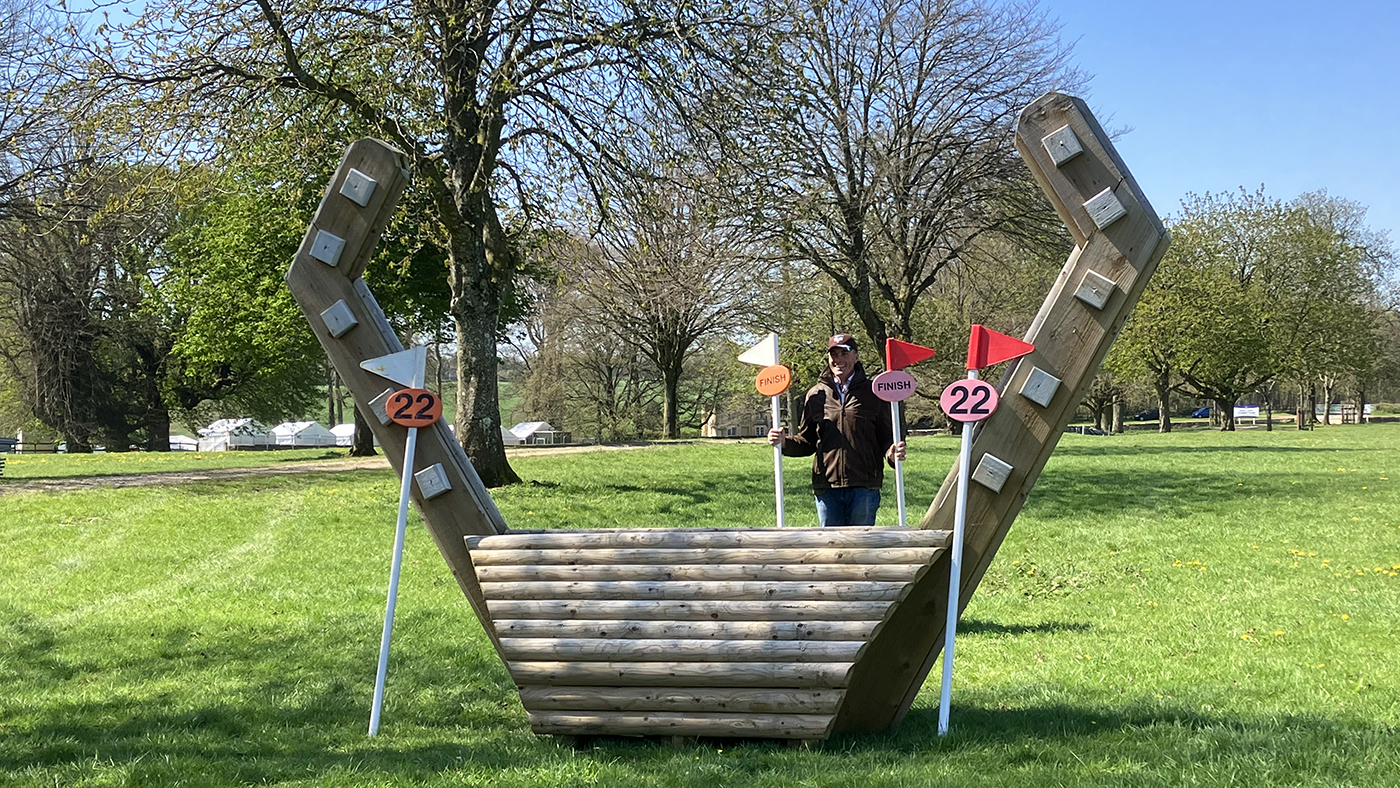
Paul Tapner’s thoughts on 2023 grassroots challenge
“The BE100 is a strong championship course for the level – it’s not inappropriate, but there are a lot of questions to answer. The BE90 is a tough 90 track, but less technical, as you’d expect. With a good BE90 horse, you should be able to jump around. The BE100 riders need to be on their A game from fence three onwards. It’s a great championship course. The riders will have been preparing for this for a long time and it’s going to test the work they’ve done.”
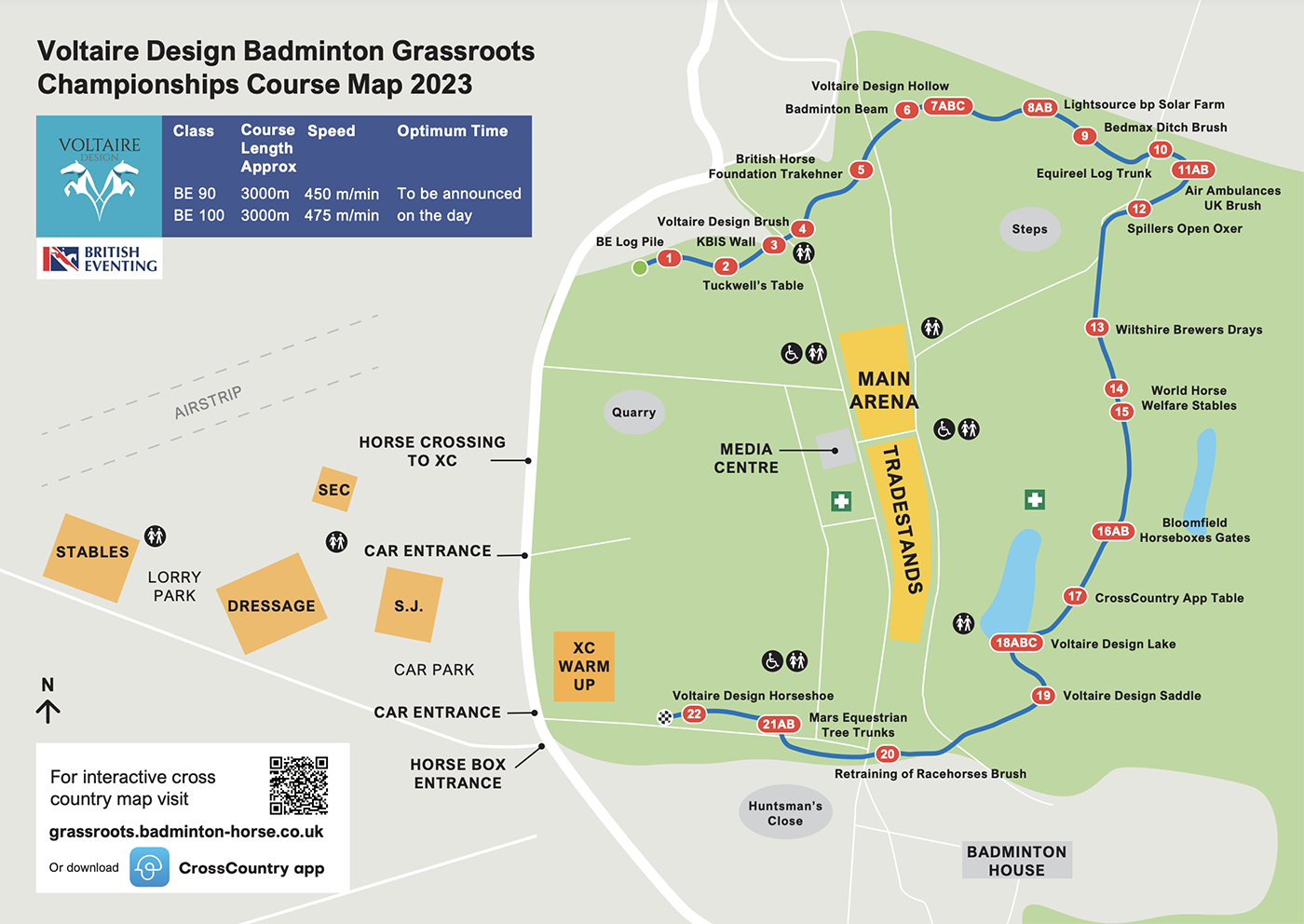
How to watch Badminton Horse Trials
If you are interested in watching Badminton Horse Trials five-star action live from the comfort of your home, wherever you are in the world, then you will need to subscribe to Badminton TV. To sign up, visit watch.badminton-horse.tv
You may also be interested in…

Rider recovers from broken back to qualify for Badminton grassroots championships

British Olympic rider wins on 9.8 score at horse’s second event

Pippa Roome: ‘My Badminton podium predictions, plus ones to watch’

Subscribe to Horse & Hound magazine today – and enjoy unlimited website access all year round
Horse & Hound magazine, out every Thursday, is packed with all the latest news and reports, as well as interviews, specials, nostalgia, vet and training advice. Find how you can enjoy the magazine delivered to your door every week, plus options to upgrade your subscription to access our online service that brings you breaking news and reports as well as other benefits.


